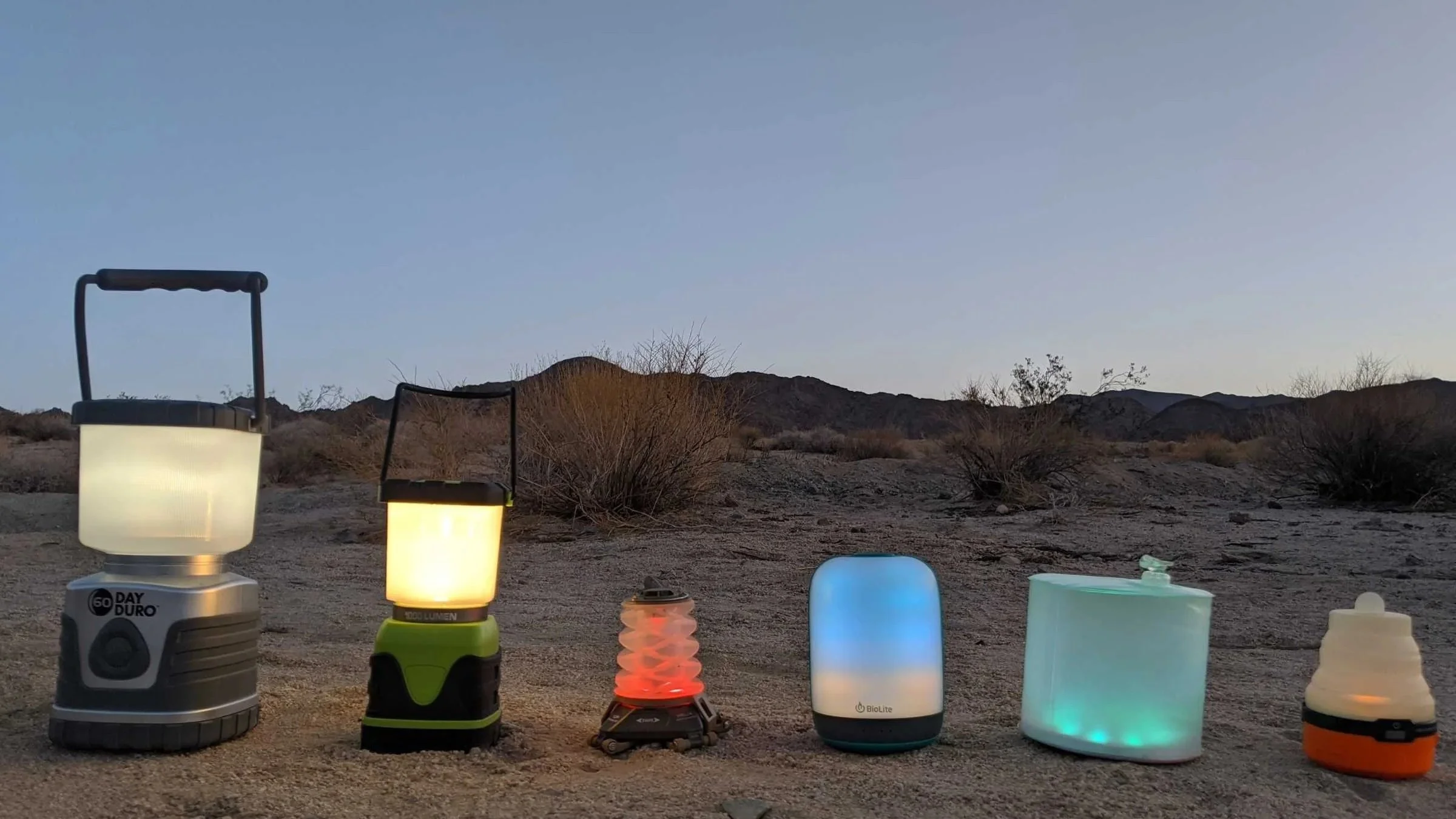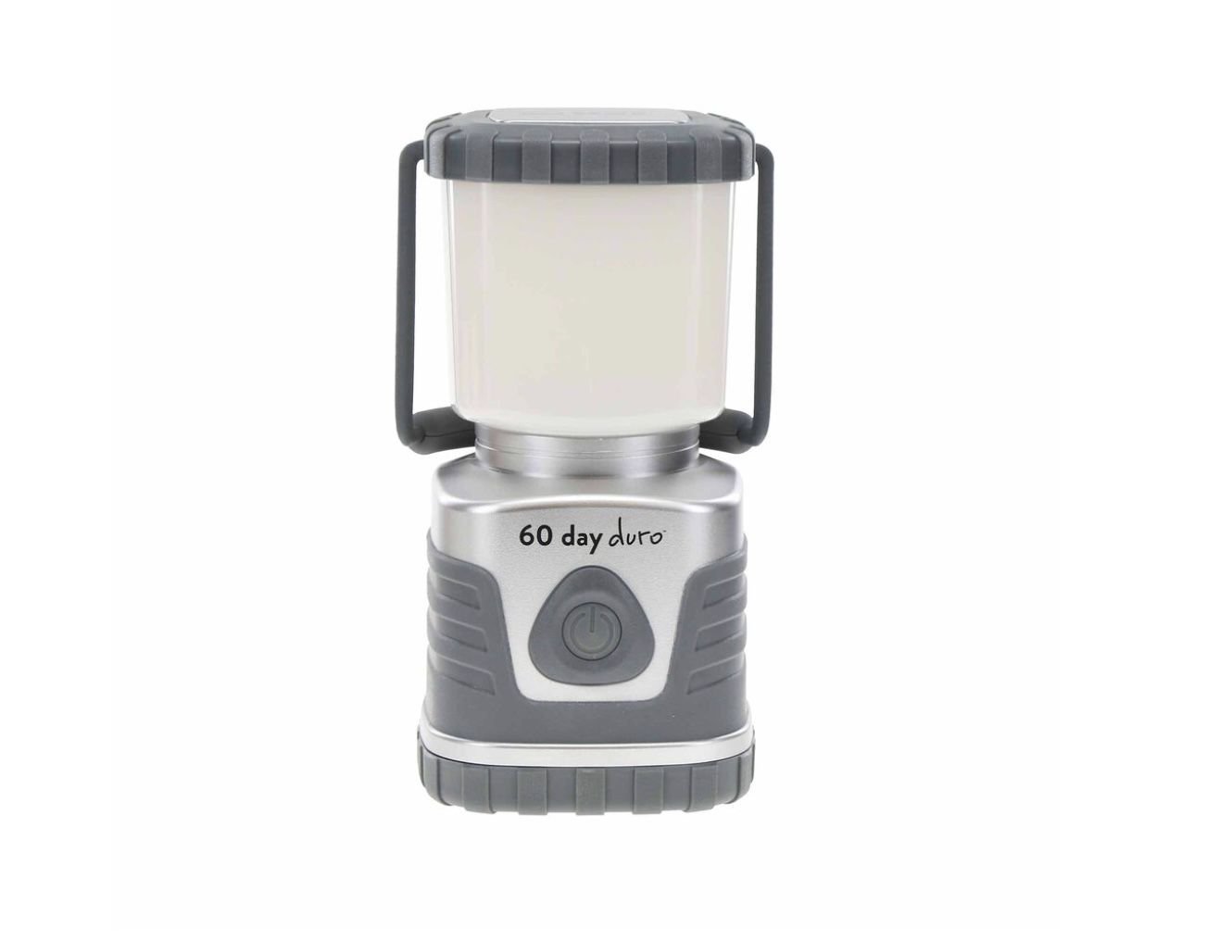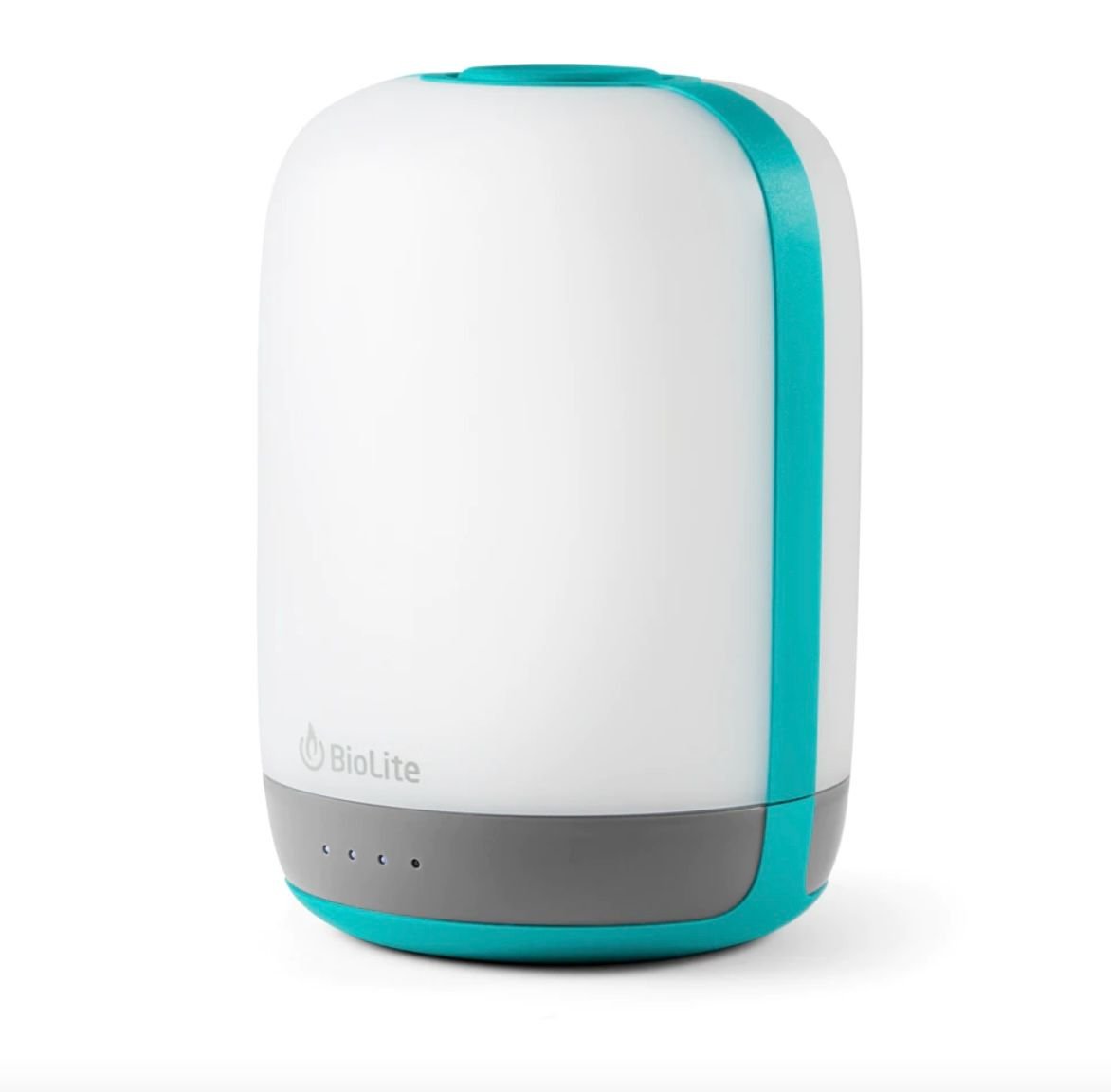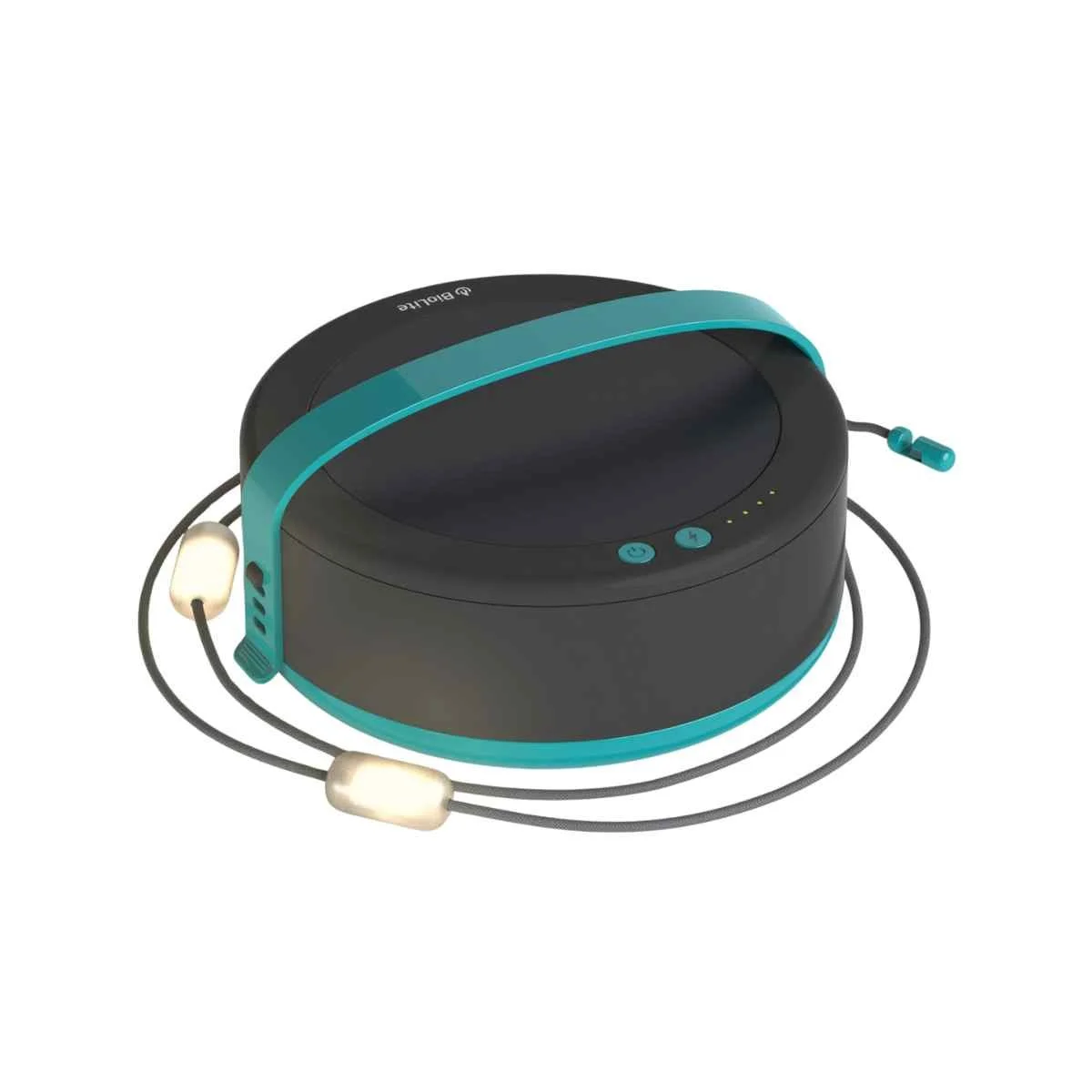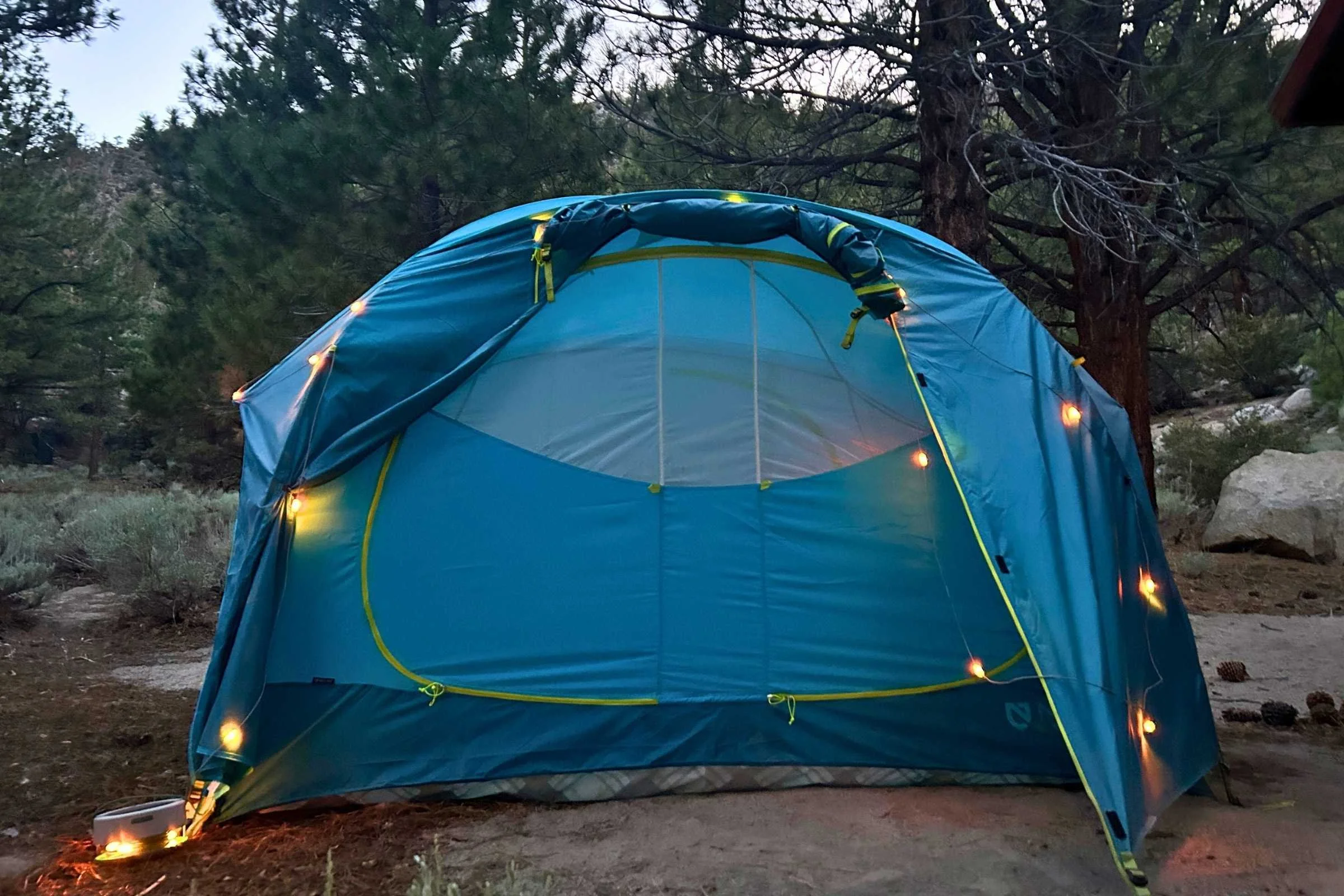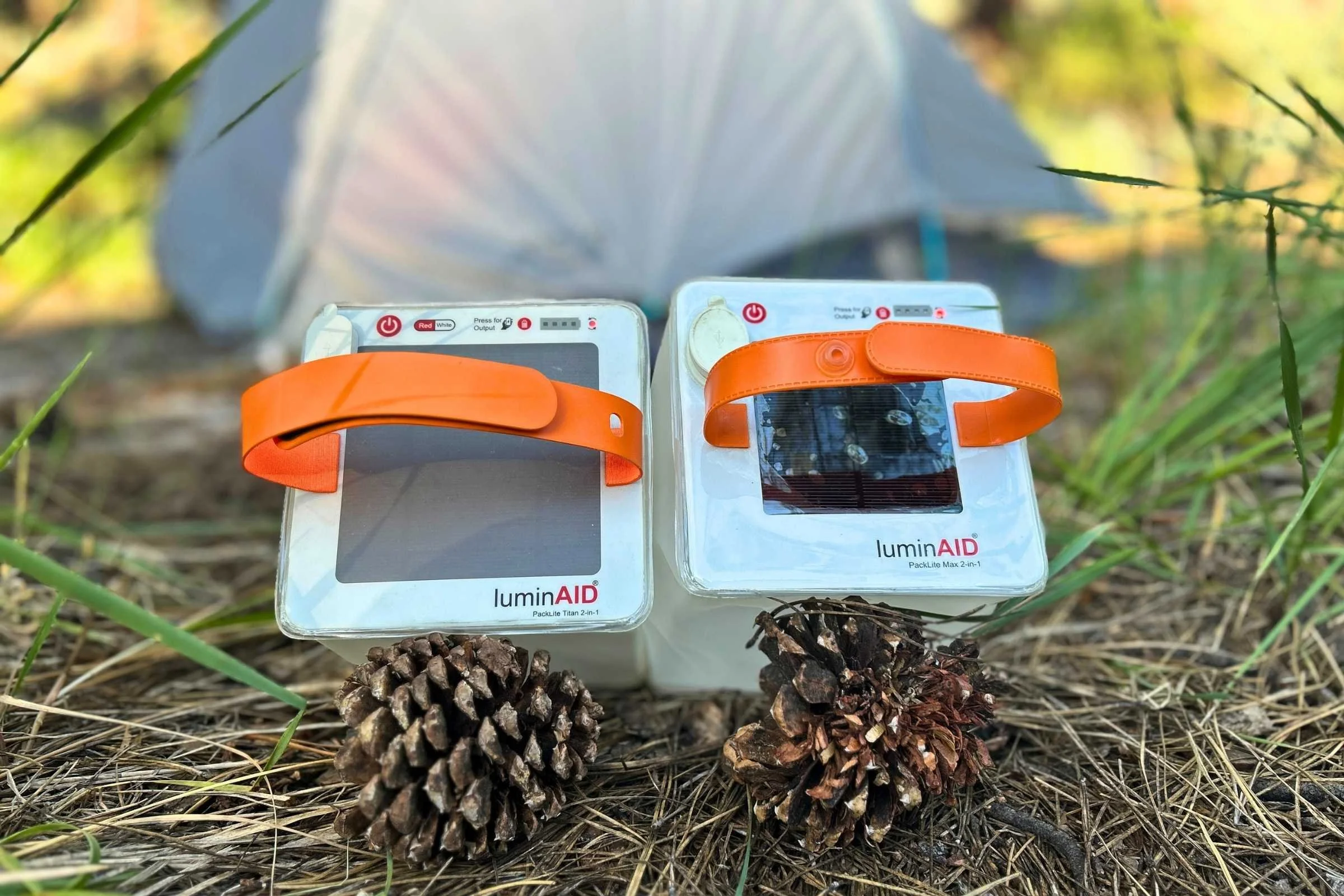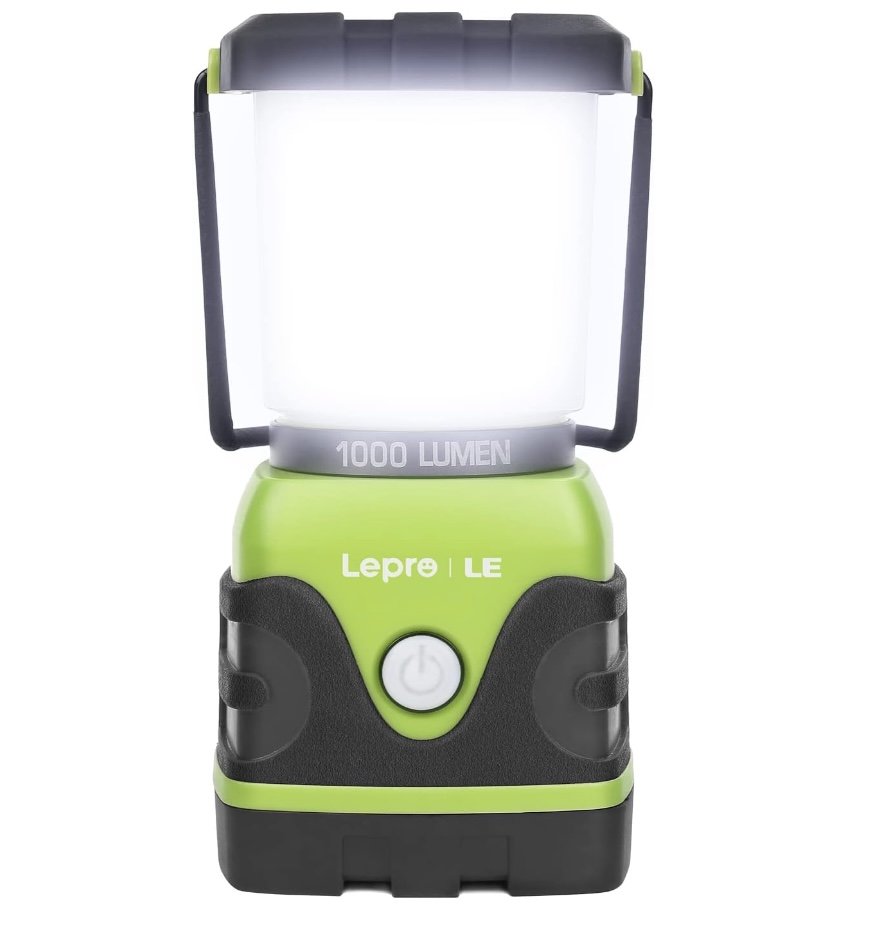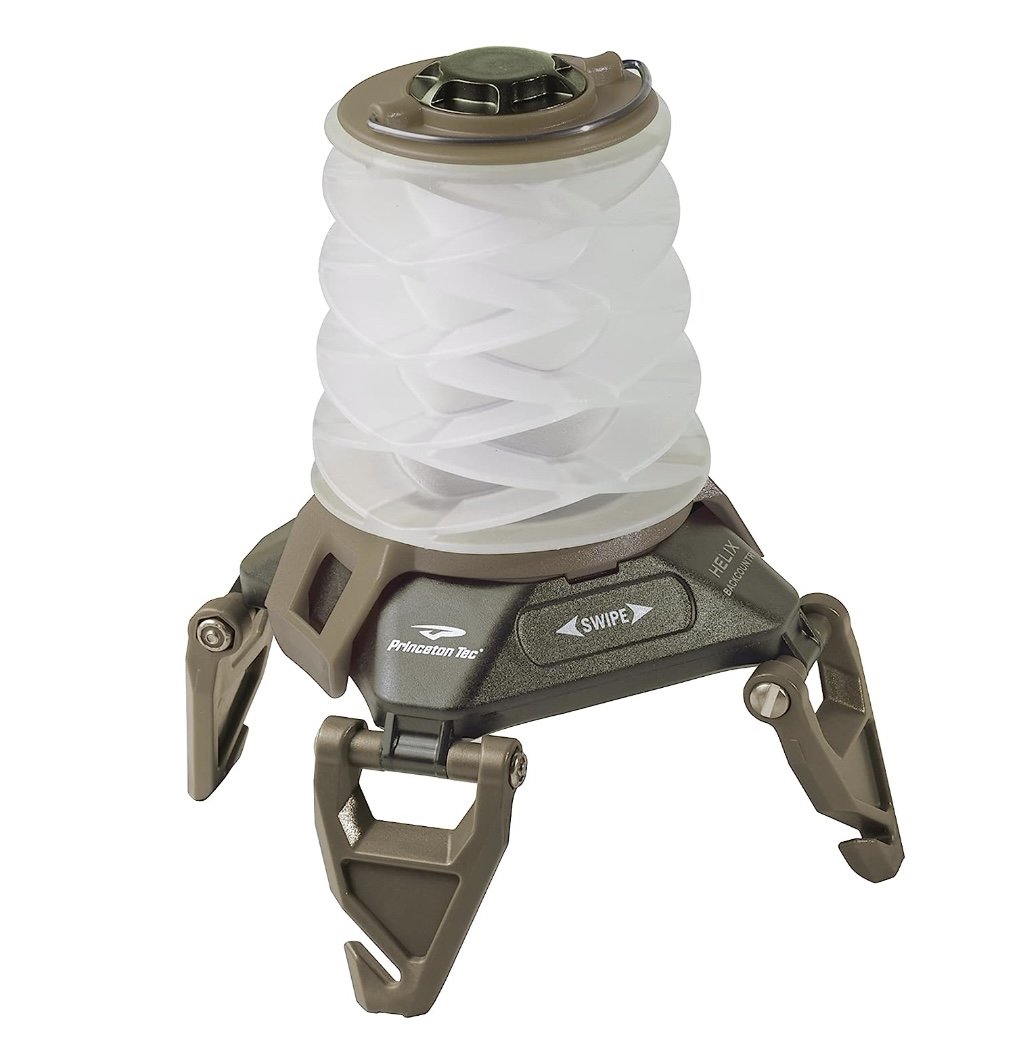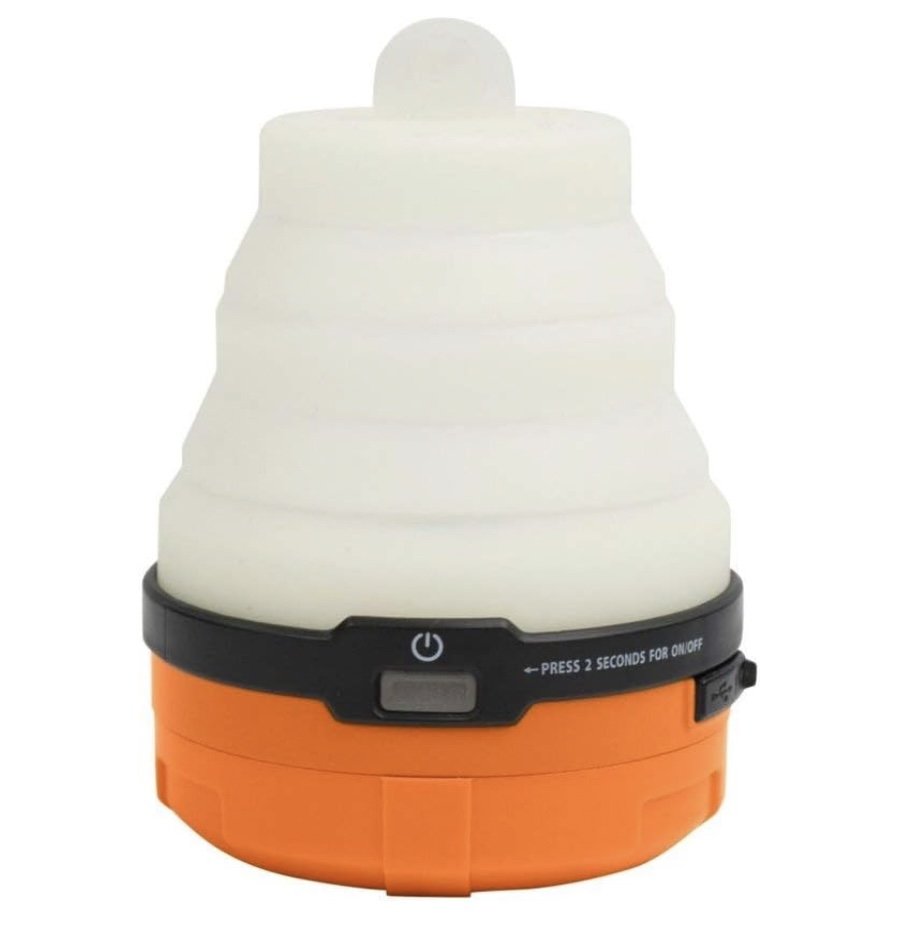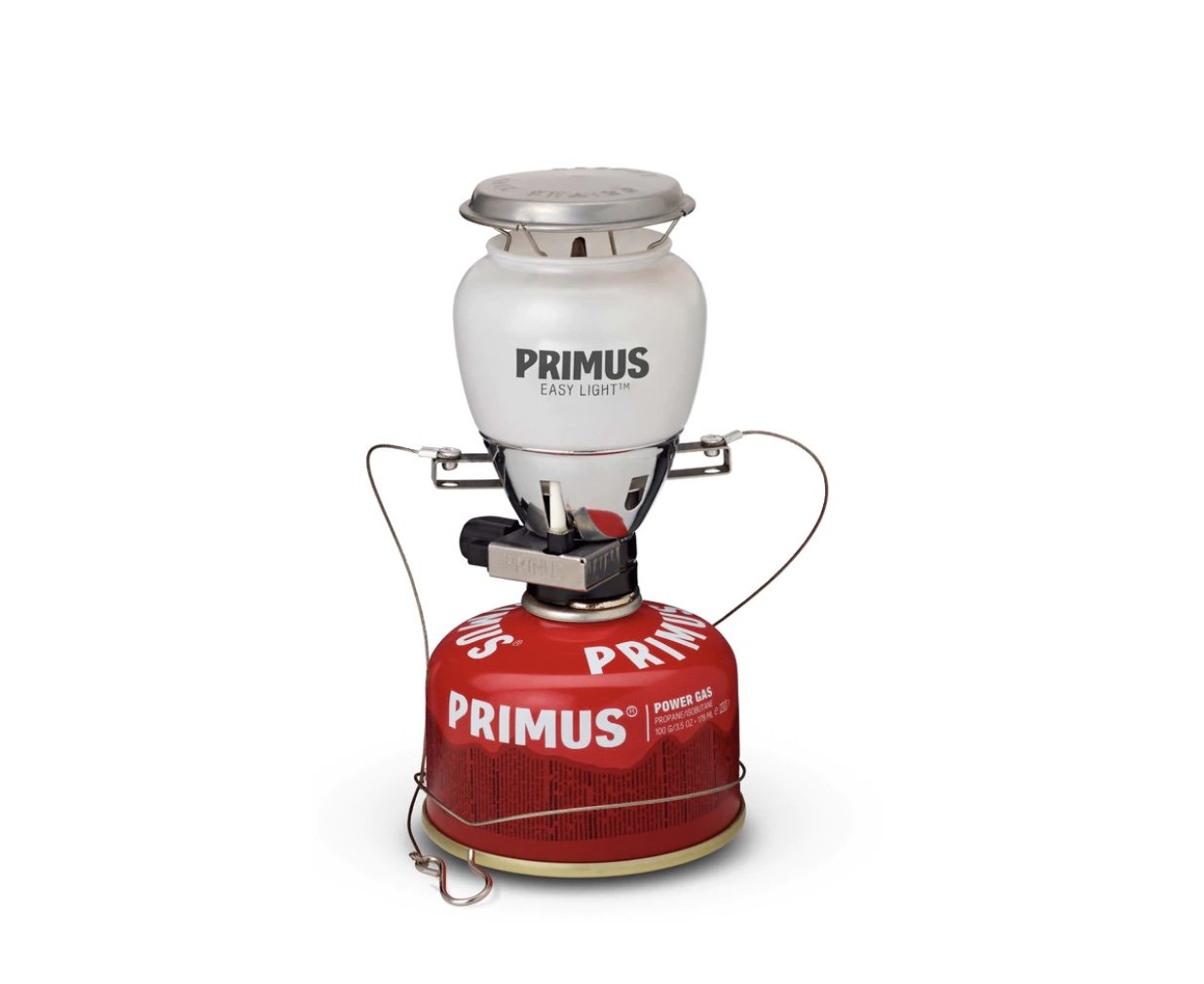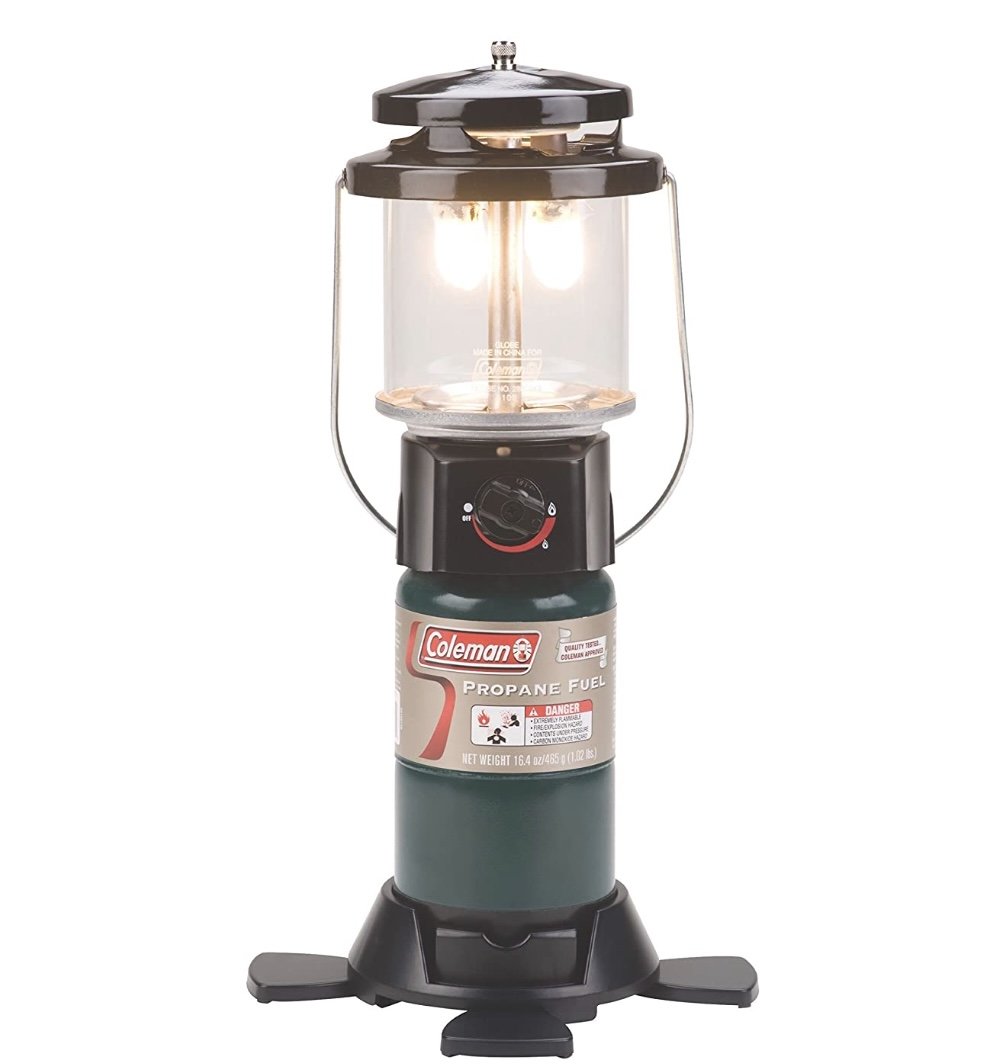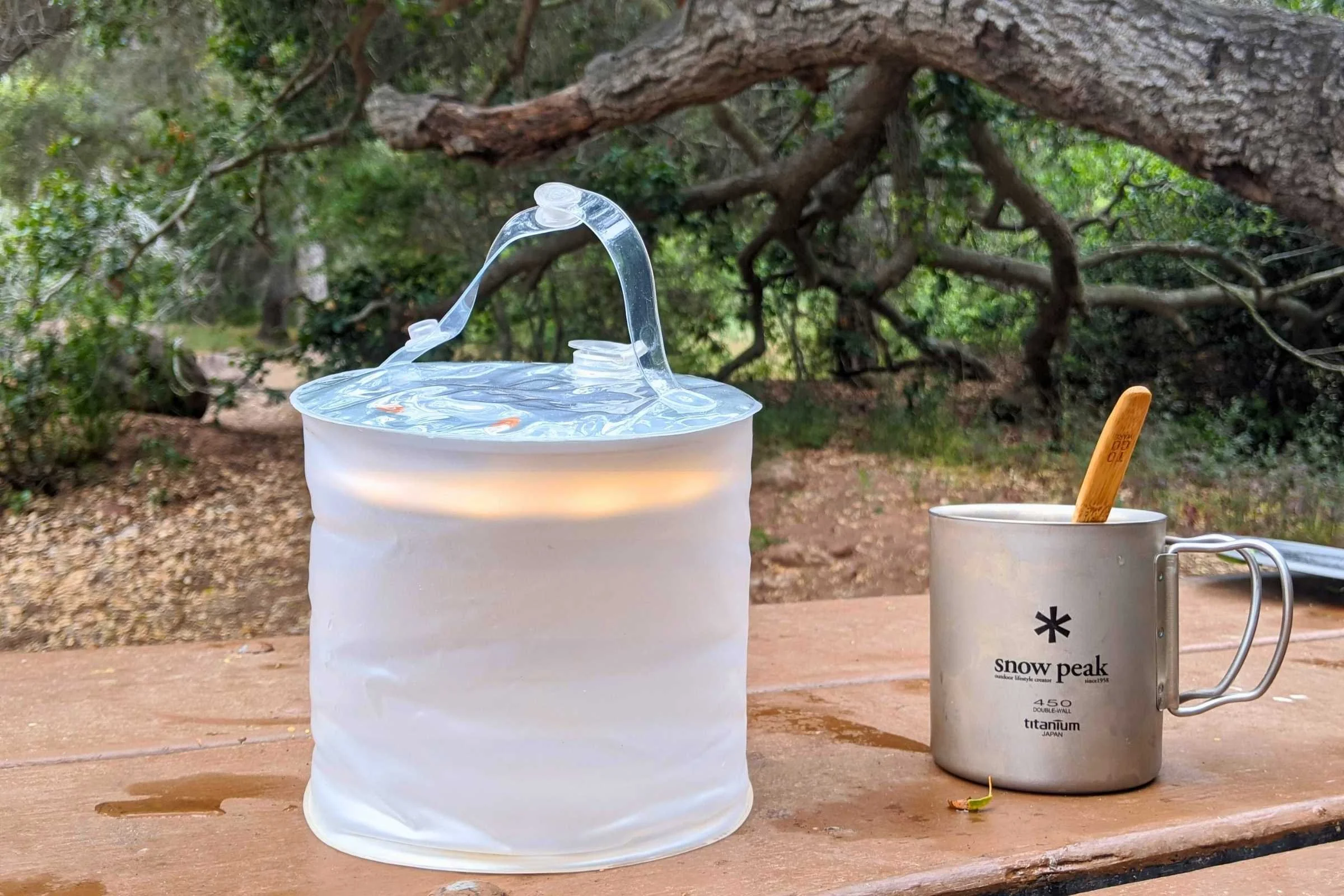Best Camping Lanterns and Camping Lights of 2025
Battery, rechargeable, and solar powered lights for camping, survival, backpacking, and backyard
September 9th, 2025, updated with a new overall winner and best solar lantern and a new best string lights winner, 3 new lanterns, plus a year’s worth of testing notes
Home > Gear Reviews > Camping
We field tested more than 30 camping lanterns and lights for three years in campgrounds, backpacking, and outdoor lighting for backyards. We've systematically evaluated lantern's performance factors including brightness, battery longevity, weather resistance, and portability.
Our extensive testing methods encompassed real-world camping scenarios from Joshua Tree's desert conditions to Colorado's high-altitude environments, from California's Bristlecone Pine regions to Utah's high desert, plus extended off-grid living situations during months at a summer camp near Yosemite. We even tested during a power outage at our home in the city. This allowed us to evaluate lantern performance in different climates and with different usage demands.
We tested lanterns side-by-side, allowing us to compare brightness, measuring actual lumen output against manufacturer claims, battery life, weather resistance during rainstorms and moisture exposure, and portability while backpacking and car camping scenarios. Testing protocols prioritized lanterns that worked for all sorts of camping tasks from setting up camp in the dark, to meal prep, tent illumination, and emergency backup.
Each recommended model underwent rigorous assessment of key performance criteria including light distribution effectiveness for area illumination, battery life sustainability during extended use periods, durability validation through impact and weather exposure, ease of operation under challenging conditions, and value proposition analysis across price points. Our evaluation process incorporated extensive comparison of power source options including battery-operated, rechargeable, and solar-powered models to identify optimal solutions for different camping styles and duration requirements.
Our top choice: The UST 60-Day DURO LED Lantern delivers the optimal combination of exceptional 1,200-lumen brightness, industry-leading 60-day battery life, and bombproof durability, making it the best camping lantern overall for car campers, emergency preparedness, and anyone seeking maximum illumination power with unmatched reliability.
This guide presents our findings on the top-performing camping lanterns and lights that provide essential illumination capabilities for tent sites, camp kitchens, and backyard gatherings across all outdoor lighting needs.
We create reader-supported, mission-driven objective gear reviews that are independently selected by our editors. This story may contain affiliate links, which help fund our website. When you click on the links to purchase gear, we may get a commission — without costing you an extra cent. Thank you for supporting our work and mission of outdoor coverage for every body! Learn more.
Comparison Table
| CAMPING LANTERN | TREELINE AWARD | BATTERY LIFE | LUMENS (MAX) | WEIGHT (OZ) | POWER SOURCE | IPX RATING |
|---|---|---|---|---|---|---|
| Ultimate Surival Tech 60-Day Duro | Best Overall Read why |
1,440 hours (60 days) | 1,200 | 49.6 | 6 D batteries | IPX4 |
| BioLite Alpenglow 500 | Best Rechargable Lantern Read why |
5 hours (high), 200 hours (low) | 500 | 13.8 | Micro-USB, 6,400 mAh lithium ion battery | IPX4 |
| Black Diamond Moji R+ | Best Portable Rechargeable Read why |
5 hours (high), 100 hours (low) | 200 | 2.8 | Micro-USB, Lithium-ion rechargeable battery | IPX4 |
| Black Diamond Moji+ | Best Portable Battery Powered Lantern Read why |
120 hours | 200 | 3.5 | Alkaline batteries or rechargeable BD 1500 lithium-ion battery | IPX4 |
| BioLite Luci 44' Solar String Lights + Detachable Power Hub | Best String Lights Read why |
8 hours (high), 40 hours (low) | 20-140 | 26.2 oz | 4000 mAh lithium-ion | IPX4 |
| LuminAID PackLite Titan 2-in-1 Power Lantern | Best Solar Lantern Read why |
3 hours (turbo), 100 hours (low) | 300 | 12.5 | 1 lithium ion 4000 mAh, micro-USB, solar | IP67 |
| BioLite Luci Original Inflatable Solar Lantern | Best Affordable Solar Lantern Read why |
9 hours | 75 | 4.4 | Integrated Solar Panel with rechargable 1000 mAH Lo-ion battery | IP67 |
| LE LED Camping Lantern | Best Affordable Camping Lantern Read why |
10 -14 hours | 1,000 | 14.0 | 3 D alkaline batteries | IPX4 |
Best Camping Lanterns
Best Overall Camping Lantern: UST 60-Day DURO LED Lantern
Light Output: 1200 lumen max
Power source: 4 D batteries
Weight: 29.3 oz
Battery Life: 1,440 hours (60 days)
What we liked: longevity, durability, brightness, ease-of-use
What we didn't like: weight, not collapsible, price (though it's often on sale)
The ust 60-Day DURO LED Lantern is the best overall camping lantern overall. It's also the Best Survival Lantern. In fact, the ust 60 beat out numerous competitors in so many other categories that we decided to name it our overall winner.
It's also our winner for best brightest lantern-outputting whopping 1,200 lumens. The ust 60-Day DURO LED Lantern is also the winner for the longest-lasting camping lantern with a battery life of 60 days using 4 D batteries. With a 1,200-lumen brightness, it's enough to light up the campsite or porch but offers a softer light than similarly bright options.
View the UST 60-Day Duro LED Lantern
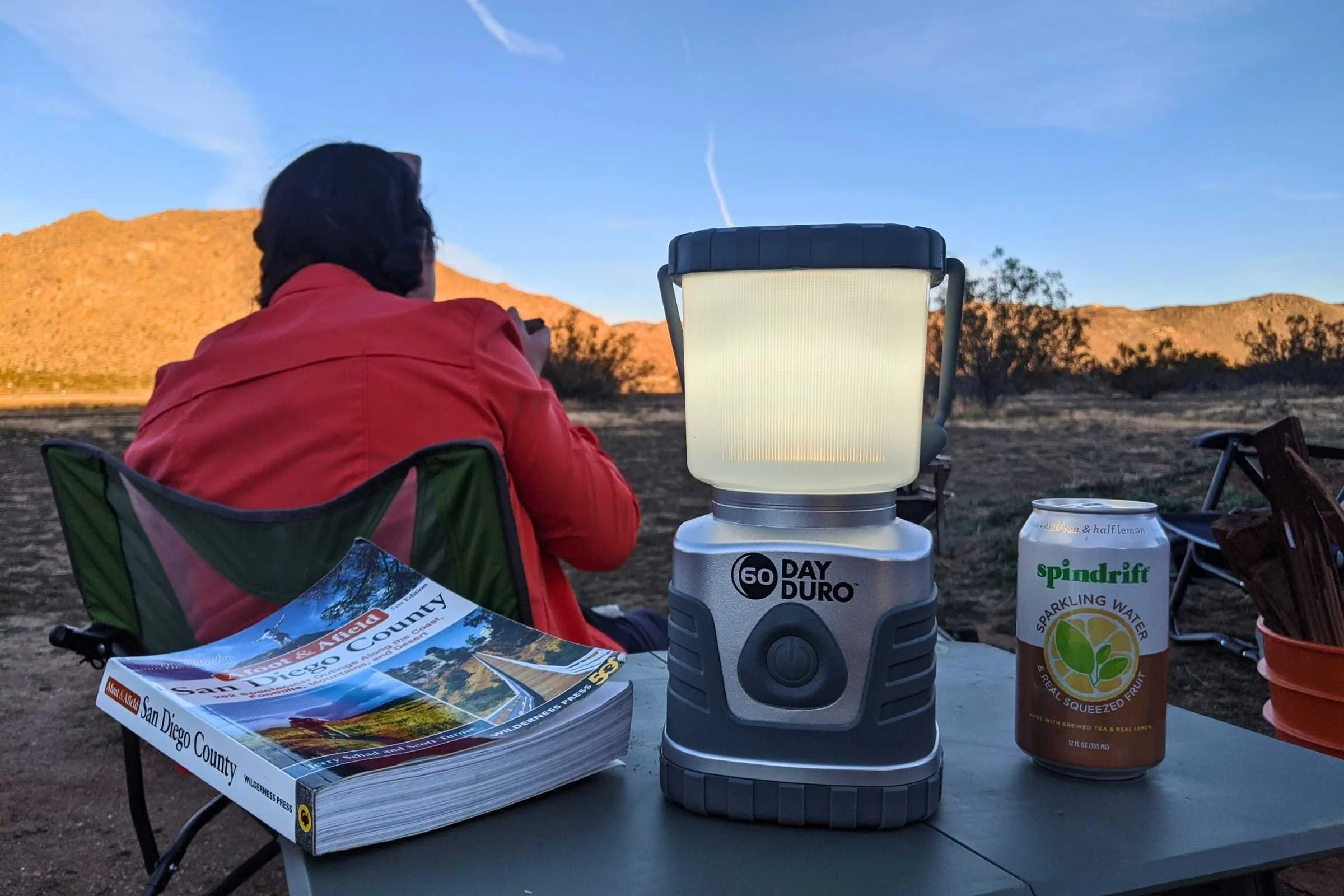
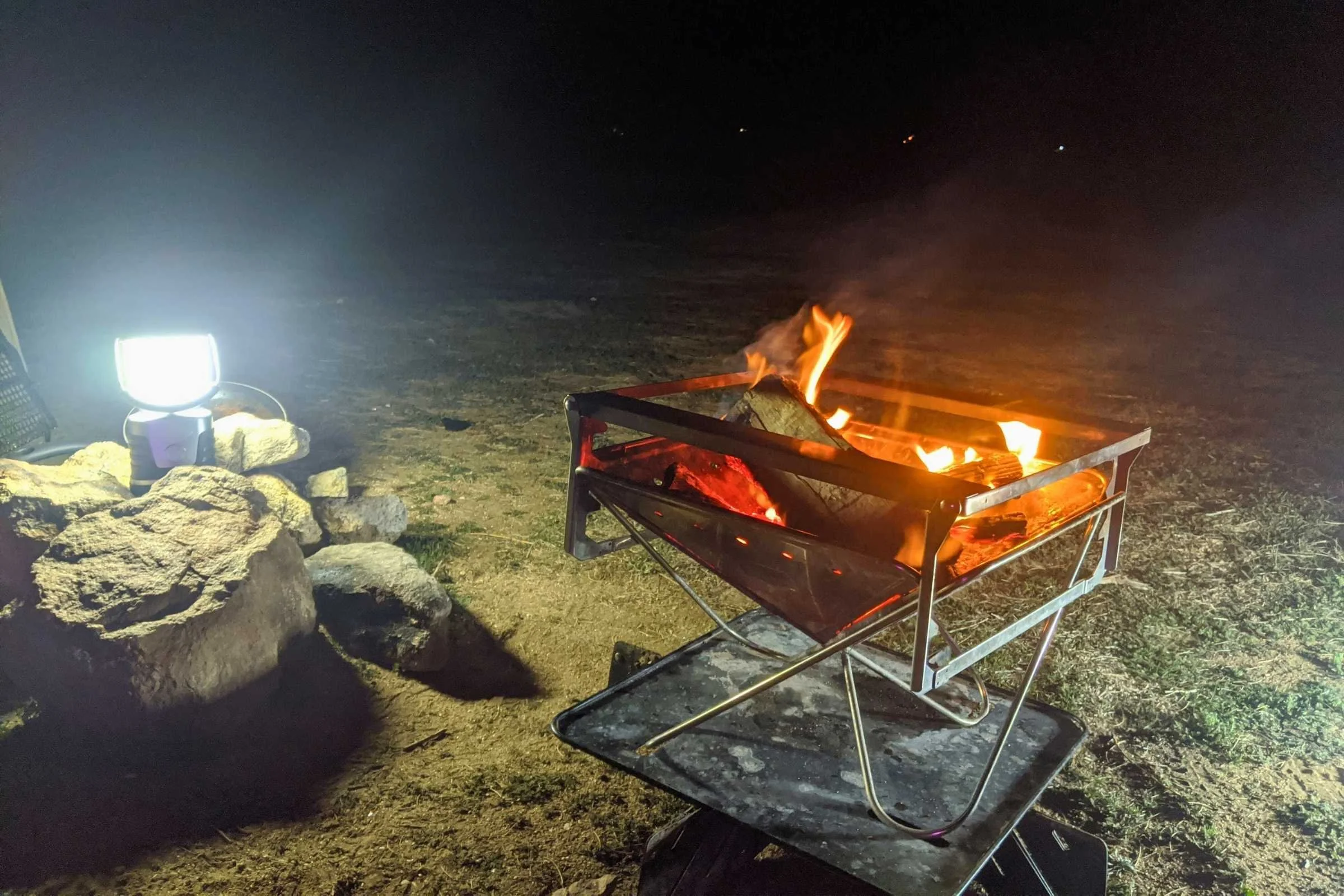
The ust 60-Day DURO LED Lantern illuminates a wider area than any other light we tested, with the brightness reminiscent of a car headlight. This lamp is the one we reach for when we've rolled into our campsite at night and have to set up tents in the dark.
While I'm well versed in setting up backpacking tents by headlamp, I tend to overstuff my car during car camping trips. This makes it more difficult to find where I placed the camping items I need, especially in the dark. The broad range of light from the ust makes unpacking, finding lost items, and getting the tent up in the dark less of a stressful experience.
Because of its brightness and long-lasting battery, the ust 60-Day is also the best camping lantern for use as emergency lighting. When a windstorm knocked out our power at home for a day, the 60-Day DURO was the first lantern I reached for from the testing pile. I wanted a lot of light without having to fiddle with a lot of buttons.
It's also the first lantern I bring out during nighttime backyard gatherings. Almost all the other lights combined don't seem as bright as the single ust 60-Day.
The ust 60-Day DURO LED has a sturdy handle and a 4"x4"x12" box shape, convenient for packing in a car or camp kitchen box. Its grooved handle fits a hand. The bottom also has a hook you can run a small carabiner through. The ust is heavy plastic with a sturdiness reminiscent of metal gas camping lanterns from a bygone era.
Frosted plastic around the light source keeps the light from being sharp in its two dim modes. The brightest setting can be harsh, so I tend to run that only for short periods when I need a lot of light, such as setting up a tent or cleaning up after a backyard party.
We're not alone in our enthusiasm for the ust DURO 60. The ust DURO 60 is highly regarded by Wirecutter and Outdoor Gear Lab. It's applauded for its sturdiness and durable plastic body, brightness, long battery life, and functionality as a survival lantern.
When I started researching lanterns, I found the price of the ust DURO to seem higher than necessary. But after looking at its competitors, its price is essentially the same as camping lanterns in this category.
Downsides of the ust 60: It's heavy and not collapsible. With 4 D batteries inside, it comes to a 29.28 oz–the heaviest of any lantern we tested. Simply put, there's no way I'm backpacking with this light.
But this is my go-to light for camping, cabins, yurts, backyard gatherings, and survival emergencies. Still, it's brighter than any lantern we tested. I can't imagine any other light helping more when I need to clean up the camp kitchen or a backyard BBQ.
Interested in camping gear? See our Camping section for our most popular stories.
Best Rechargeable Lantern: Biolite AlpenGlow 500 Lantern
Light Output: 500-lumen max
Power source: micro-USB rechargeable integrated battery
Weight: 13.8 oz
Battery Life: 200 hours on low
What we liked: Modern design, fun colors, ambiance lighting, reliable charging
What we didn't like: heavy, wanted additional light output for chores
The BioLite AlpenGlow 500 is an aesthetically-pleasing rechargeable camping and backpacking lantern. Its pleasing colors and modern design make the BioLite AlpineGlow a good option for all campers. Plus, Biolite impacts people living in energy poverty through safe lighting.
We found the AlpenGlow to be the least finicky and most reliable of the rechargeable battery lanterns we tested. It has a protector for the USB charger to prevent water or sand from entering and blocking delicate pins in the micro-USB port. Its buttons and USB ports are more straightforward than other rechargeable camping lanterns we tested, which stopped taking a charge after 6 months of use. The Biolite is going several years strong, even after heavy use. That's why it's our winner for best rechargeable lantern.
Compare Prices on the BioLite AlpenGlow 500 Lantern
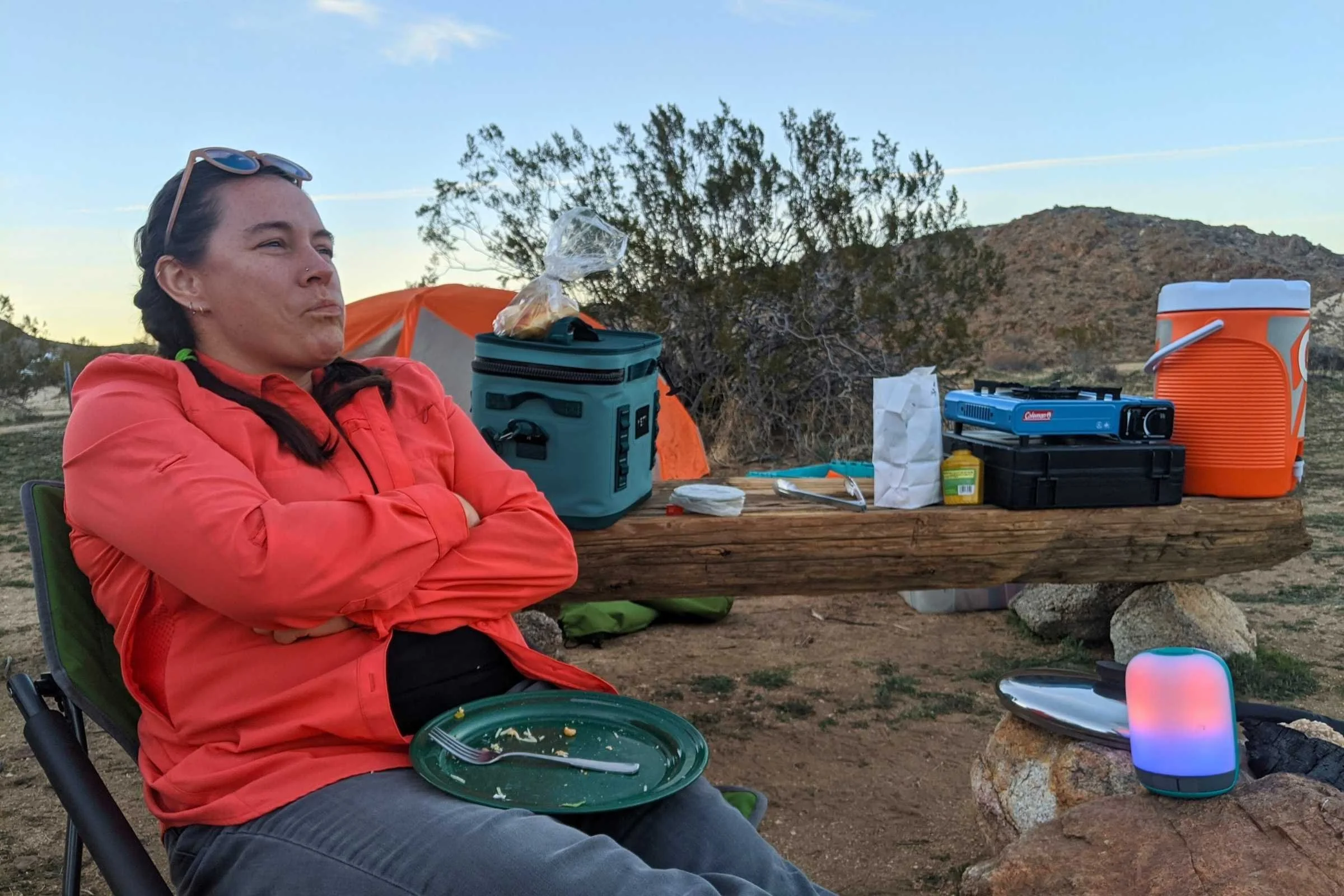
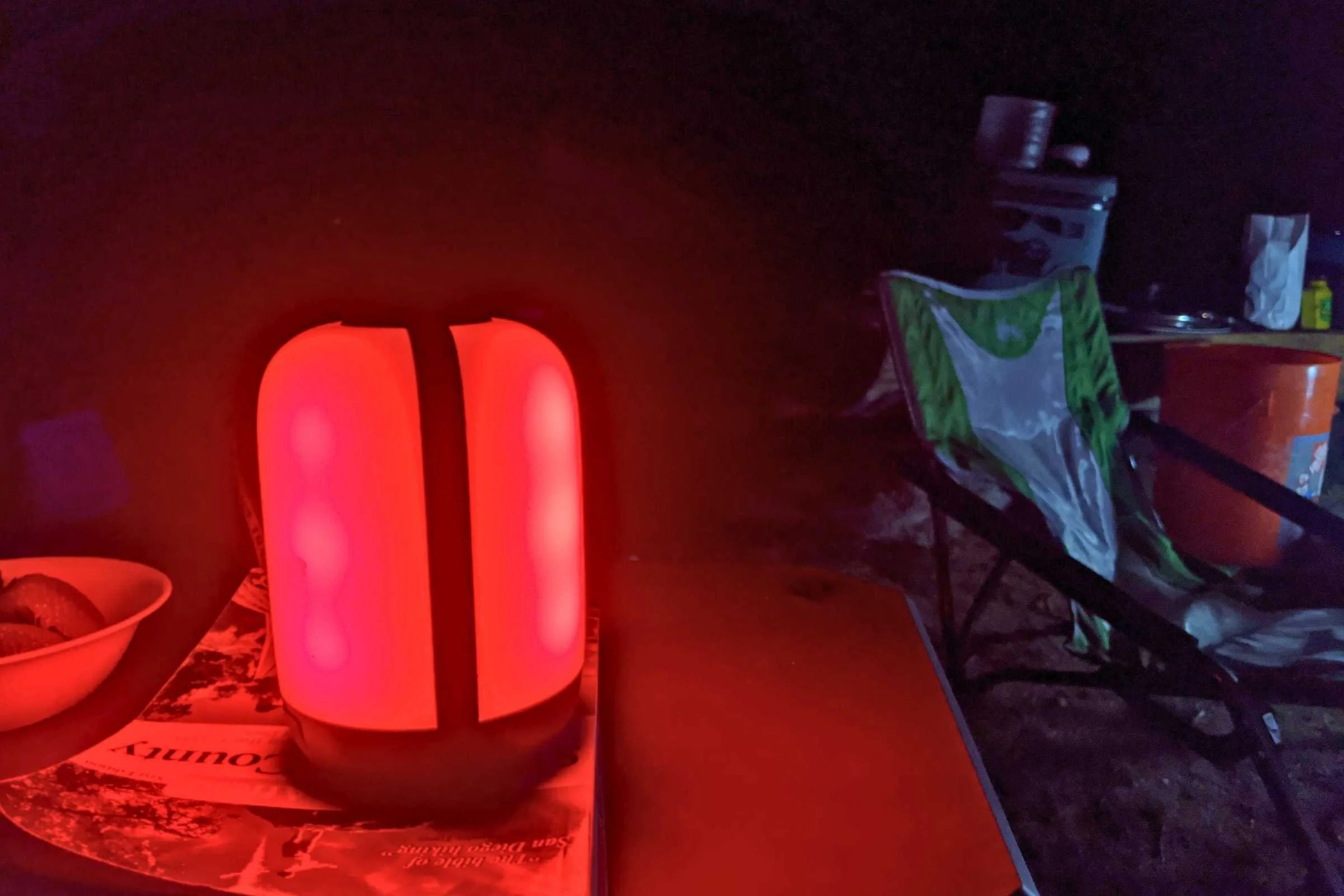
What appeals to us the most about the AlpenGlow is the multiple colors and the party trick-like ability to create a light show from your phone. For example, the AlpenGlow can have multiple colors at once, splitting half the lantern with blue and red light. We found this especially lovely when camping during a fire ban in California, which prevented us from having a real campfire. The ability to gather around a festive colored lantern and control the light with our phone felt like a fun alternative to "cowboy TV" (what some people call having a campfire).
The AlpenGlow weighs 13.8 oz, which is not the lightest backpacking lantern, but it's also big enough to work as a camping lantern. For an even more portable version, consider the BioLite AlpenGlow 250. It's got most of the same features, but weighs about half as much.
Price-wise, it's also mid-range among the lanterns we reviewed.
We very nearly gave the best rechargeable lantern award to the similar Black Diamond Orbiter (review below). But the Alpenglow has a much longer battery life (400 hours vs. 4 hours) and more lumen. Plus, it has more colors, which aren't necessary, but add some fun.
The BioLite AlpenGlow 500 is a top-rated lantern at REI, with customer reviews ranking it at 4.8/5. It also made the Best Lanterns list in the REI Co-op Journal. Customer reviews overwhelmingly give it 5 out of 5 stars, specifically noting the multiple colors, candlelight "vibe," warm light, quality engineering, and fast charge.
The biggest complaint – and one we share with customers – is that it isn't available in USB-C, which is widely considered the future of USB charging.
The AlpenGlow not only provides function, but also camp entertainment. It’s a winner for its good balance of price, functionality, and brightness.
Best Portable Rechargeable Lantern: Black Diamond Moji R+
Light Output: 200-lumen max
Power source: Alkaline batteries or rechargeable BD 1500 lithium-ion battery
Weight: 3.5 oz
Battery Life: 120 hours
What we liked: Lightweight, simplicity, battery life
What we didn't like: Handle doesn't work on all surfaces, not the highest waterproof and dustproof ratings
The Black Diamond Moji R+ camping lantern is the best portable rechargeable camping lantern out there. At only 2.8 oz, it packs a punch even though it's smaller than the satsuma I'm eating as I write this.
The Black Diamond Moji R+ recharges via USB-C, cycles between colors, and comes with a durable metal hook and magnets for on-the-go attachment. This portable light packs a big punch and many people love them so much, they purchase multiples to have all around their campsite or use in everyday life.
View the Black Diamond Moji R+
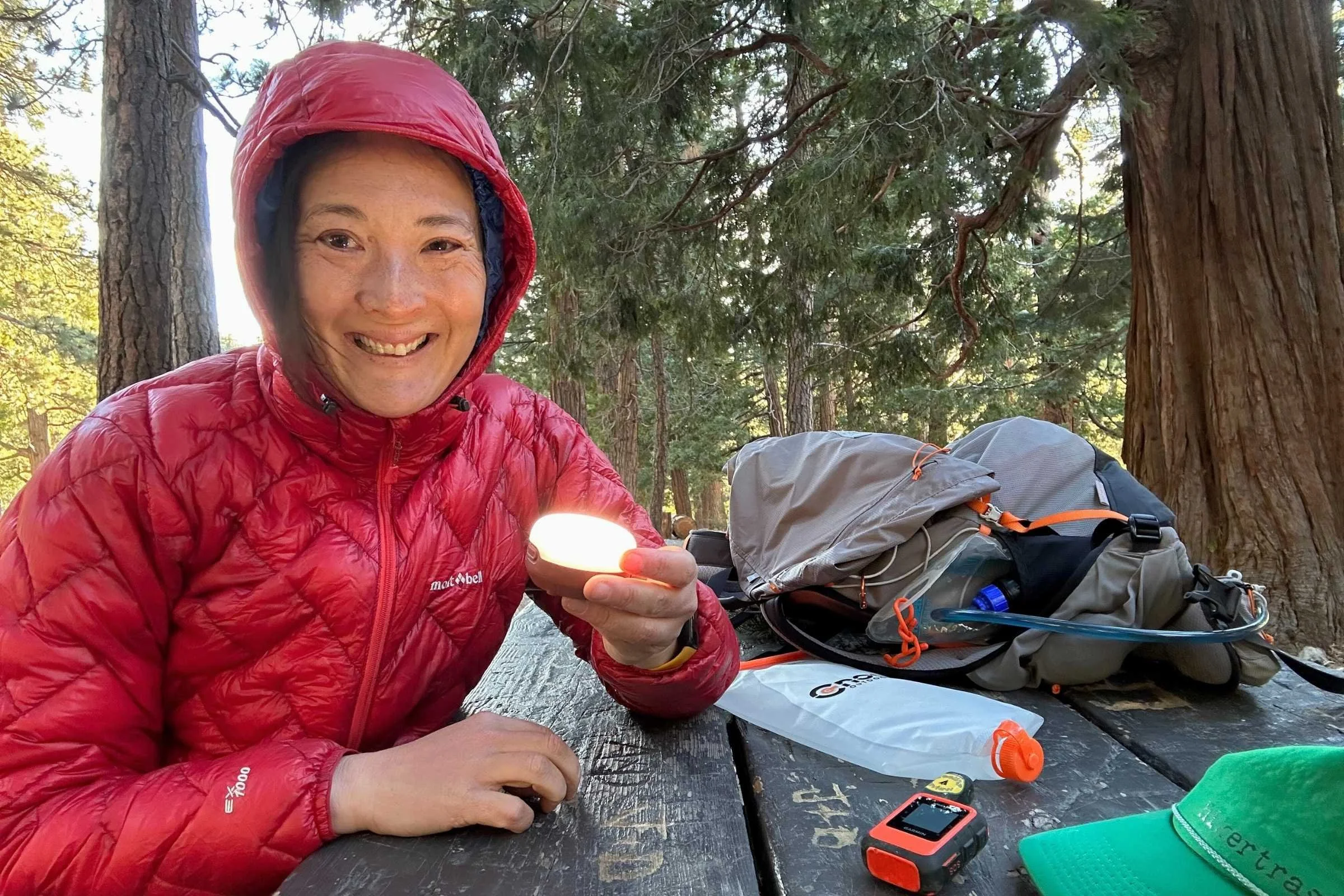
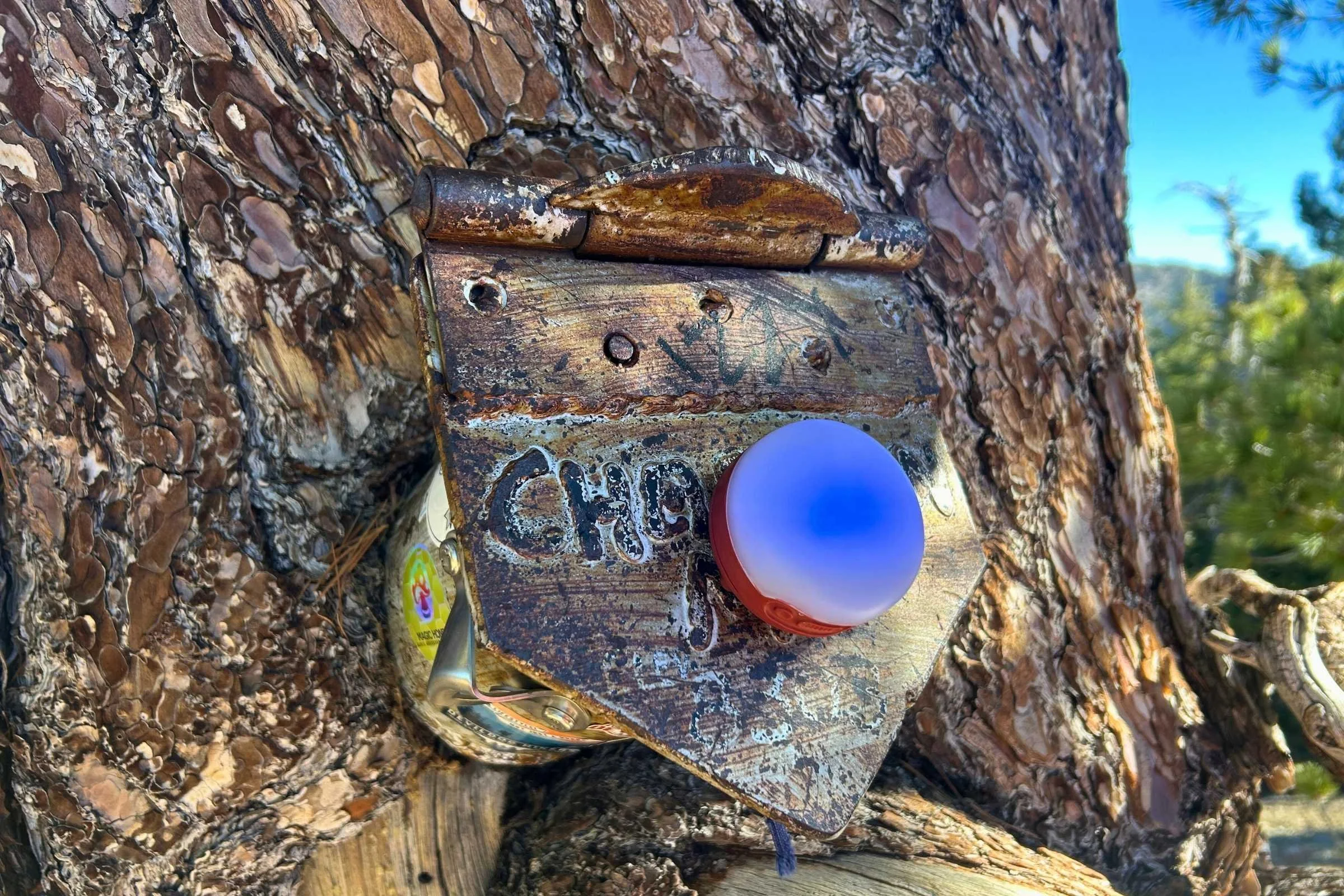
While not the brightest lantern we tested, it lights up a tent with diffused light better than hanging up a headlamp and expels a soft glow in camp kitchens, too. Although it is supposed to be the same lumen rating as the similar Biolite Alpenglow Mini, it is much brighter, despite being smaller by about 1/3rd.
Like the Alpenglow Mini, the Moji R+ cycles between colors, though the Alpenglow goes through more colors. Where the Moji R+ shines is a strobe-mode for SOS situations.
Unlike many other portable camping lanterns we considered, it doesn't require inflation or deflating.
We've noticed the Moji R+ is popular among non-outdoorsy people, too. They keep them in their car and commuter bags and backpacks, noting it is much better than a phone flashlight. The frosted glass and rounded size are modern and cute for everyday users, especially since it's available in multiple colors (and outdoor users don't mind the style, either).
The Moji R+ has a huge leg up over other portable lanterns because of its magnetic attachment system. You can stick the lantern to the side of a vehicle or even on your refrigerator.
One complaint with the Moji R+ is that the collapsible metal handles can be difficult to unhook. We prefer the stretchy hook system on the similar BioLite Alpenglow 250.
The Moji R+ is rechargeable via micro-USB. That's another ding against it. USB-C is the future and we can't wait until this lantern comes out in USB-C.
Best Portable Battery Powered Lantern: Black Diamond Moji+ Lantern
Light Output: 200-lumen max (150 lumens in older models)
Power source: 3 AAA batteries, can accept rechargeable battery
Weight: 3.5 oz
Battery Life: 120 hours
What we liked: simple, affordable, weight, battery life, portability
What we didn't like: On testing, we were not able to attain the 120 hour battery life listed by Black Diamond, no battery life indicator
The Black Diamond Moji+ is a simple, affordable, compact battery lantern that wins our best portable battery lantern award. It's a bestseller among REI customers because of its price, battery life, portability, and durability. This round, pocket-sized light outputs 200 lumens — more than its size would indicate.
The Moji is the best lantern for folks who want a small, simple, reliable, packable, and affordable headlamp. We liked that the Moji is straightforward to use. In a world where it seems like every lantern wants to give you a Coachella light show (including the Moji R+), the simple Moji has a single button to turn it on.
It has a metal hook for hanging, which folds down. It comes in three colors. At 3.5 ounces (that includes 3 AAA batteries), it's one of the lightest lanterns out there, and its round shape makes it more packable than other options we considered.
Compare Prices on the Black Diamond Moji+ Lantern

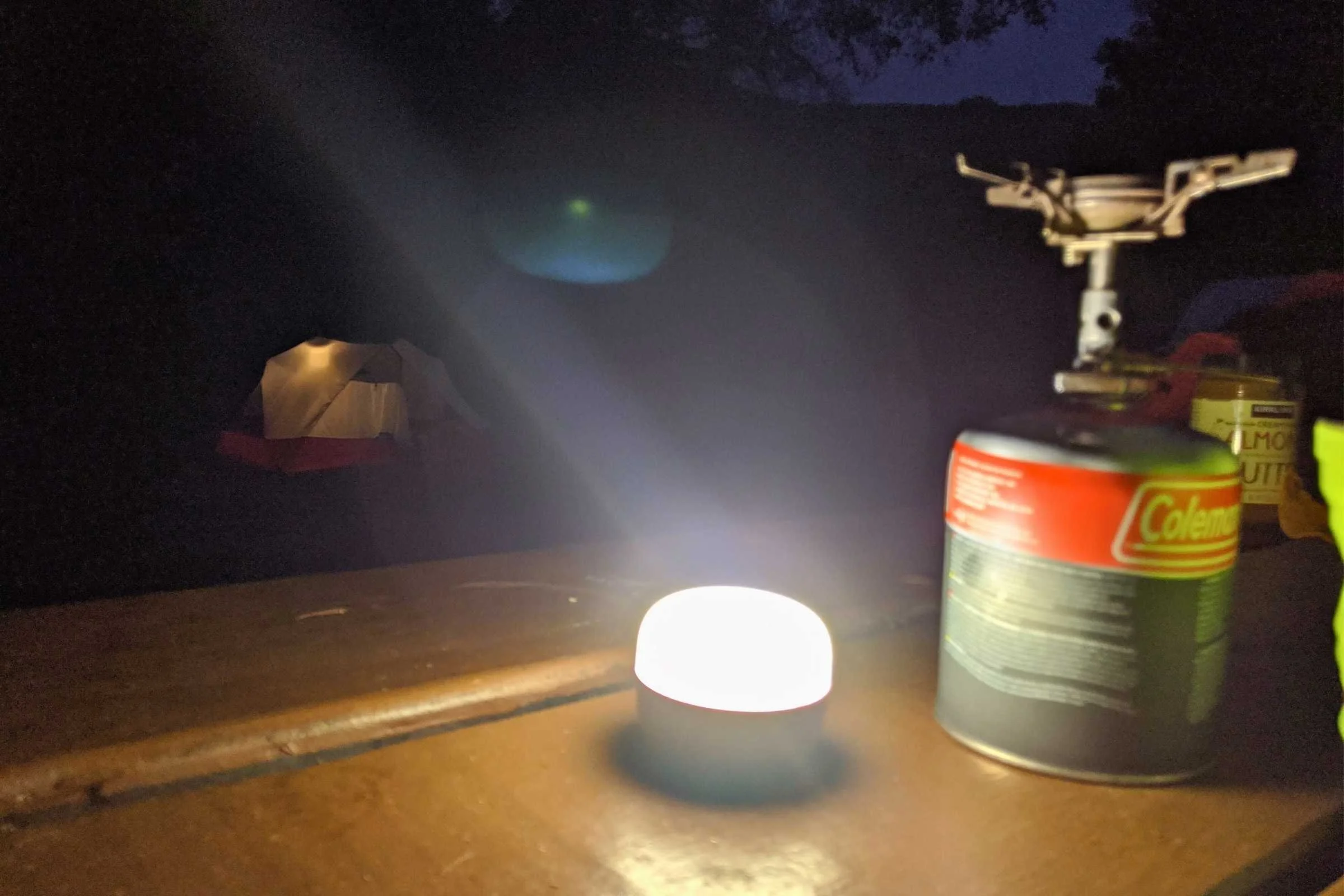
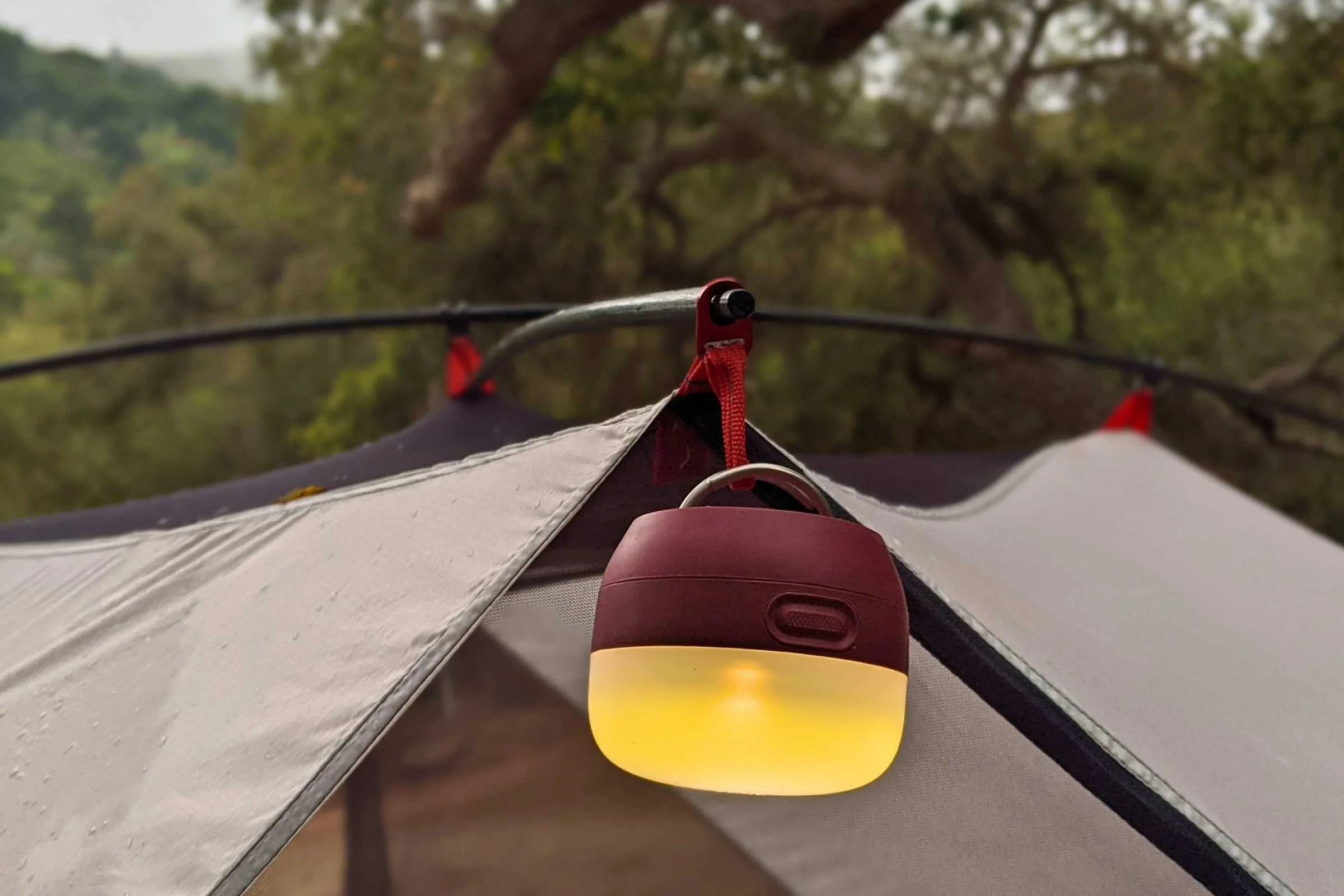
The light emits through frosted white plastic, so it never appears harsh. While it's not the brightest lantern, it's enough to add to a backcountry campsite or other situations where you don't want to carry a lantern far. It's about twice the size of the Moji R+ but they have the same reported lumens: 200. In field-testing, we find the USB-charged Moji R+'s brightness to be more consistent whereas the battery-charged Moji+ can dim as the batteries go.
Unlike other packable lights, you don't have to worry about huffing and puffing to inflate the Black Diamond Moji. You also don't have to worry about moisture from your breath impacting the light quality.
With the Moji, you also don't have to worry about whether your destination will have enough sun to charge your lantern. The Moji's battery power is suitable for Pacific Northwest camping or winter trips.
It's also well-suited for climbing or bushwhacking trips where you don't want the hassle of charging a solar-powered lantern on the side of your backpack.
And let's be honest: it's also handy for folks like me who occasionally forget to charge their solar lantern the day before a trip.
If you prefer a more eco-friendly option to traditional AAA batteries, the Moji will accept a rechargeable battery.
Our one gripe with the Moji lantern is its battery life. In testing, we found that the battery diminished much faster than the 120 hours that are advertised.
It also has a smaller globe-to-output light, making it decent for ambiance but not as helpful for camp chores.
The Moji is a great durable, portable, battery-powered lantern if you're headed out on a backpacking trip. Just be sure to put in fresh batteries before your next trip.
Best String Lights: BioLite Luci 44' Solar String Lights + Detachable Power Hub
Light Output: 20 - 140 lumens (depending on setting)
Power source: solar or rechargable 4000 mAh lithium battery
Weight: 26.2 oz (includes strings and hub)
Battery Life: 8 hours (high), 40 hours (low)
What we liked: long string lights, easy to use, doesn't tangle, works as well at home as permanent patio lighting as it does in campsites, recharge via solar or USB
What we didn't like: holder plug and plug can get confusing, must unwind the whole string to plug it in, needs more hooks
The BioLite Luci 44' Solar String Lights are the best string lights for camping. Most string lights out there are pretty short and never seem to be long enough to light up the area we're trying to illuminate. Unlike many string lights, the BioLite Luci is 44' long and can run off solar power and can be charged via USB-C, too. It has a IPX4 rating, so can withstand some water splashing and some people even leave it up in their backyard throughout the summer.
We used the Luci to decorate the porch of a cabin and also a tent. We used it to illuminate a trail to a camping area. When it is time to pack up camp, it reels back into the spool-like base to minimize tangling.
BioLite Luci 44' Solar String Lights
The Solar String lights are available in white and color, and both are popular at REI. The cord is nylon-braided, so is more durable than many other string lights out there and looks better when used inside. The bulbs are shatter-proof and we really dragged them among the sagebrush to no ill effect.
The BioLite solar string lights run on a 4,000 mAH Lithium ion battery that provides 40 hours of light on low and 8 hours on high. It can be charged via USB-C (3-5 hours) or solar.
We couldn't find what the company claims is the required amount of hours to fully charge via solar, but over a month of camping, we never seemed to be able to get it to fully charge via solar. Still, what we got off the solar was enough to keep it going each night before we turned it off to go to bed, so that was good enough.
Our only complaint was the cell phone charging capabilities. It can charge via USB-A or USB-C, which is great. However, it charged phones very slowly to the point where we gave up and decided to charge our phone off another device.
In conclusion, these are reliable and beautiful string lights, even if their secondary purpose of phone charging what you'd get out of a dedicated power bank. BioLite also has a shorter version (18 feet) that is more affordable and just as popular. We prefer the 44' version, but if you know you don't need as much length, check out the 18 foot version, too. We can't wait to find more excuses to string up the BioLite Luci Solar lights. They're fun and provide just the ambiance to make your campsite or backyard special.
Best Solar Camping Lantern: Luminaid PackLite Titan 2-in-1 LANTERN
Light Output: 300-lumen max
Power source: 4000mAh lithium battery, solar powered or micro-USB
Weight: 12.5 oz
Battery Life: 3 hours (turbo), 100 hours (low)
What we liked: twist to inflate is easier than blow to inflate models, red light, hook and loop strap can attach to many surfaces, high waterproof and dustproof rating, battery light indicator, brightness for a solar lantern
What we didn't like: uses outdated micro-USB, glue on handle can melt at higher temperatures, phone charging fails eventually (as it has for every solar model we've tested)
After two years of testing, we still think the LuminAID PackLite Titan 2-in-1 is the best solar camping lantern. The folding design is easier to expand than similar models that require blowing up and squishing down for deflating. A simple huff into a large hole and it inflates into a packable square that fits well into spaces. We appreciated this after a long day of hiking or when we were at altitude.
Another aspect that set this lantern apart from other solar charged power lanterns is that LuminAID lights are all waterproof and dustproof. They can be submerged up to 1 meter (FL 1 STANDARD IP67) and can float (though be sure to protect the USB-ports). We also liked the red light option on this lantern, which can help save your night vision and be less obtrusive and more Leave No Trae when you are in a busy camp.
Compare prices of the Luminaid PackLite Titan 2-in-1
We tested the luminAID PackLite Titan 2-in-1 with the luminAID PackLite Max-2-in-1 camping lanterns. The Titan has a larger solar panel and a red and white setting.
Compared to the similar BioLite Charge 360, we found the LuminAID was faster and easier to inflate and deflate. With the BioLite, you have to squeeze the mouth valve just right to get it to inflate. Whereas with the LuminAID, it twists into place after a single blow.
We tested several models of solar lanterns that have USB ports for recharging a phone. In every case, it failed after a few months. Whether it got wet or got dirt in it, we're not sure. But we haven't found this feature reliable.
Instead, we based our experience on solar lanterns on its easy to use handles and ease of charging. We like that the handles come with Velcro so you can attach them to things like thicker tree branches instead of just hooks. We like that it comes with a battery indicator to tell when it is charging.
It's also brighter than some other solar options, although it doesn't come with as many colors.
One potential downside of this lantern is that the glue that attaches the Velcro to the handles started melting after a month of being put in direct sunlight each day.
One thing to note about any solar charging lantern is that solar panels have specific condition requirements for charging. Of the negative reviews we found, many customers had unrealistic expectations of what solar charging is capable of doing. In our Best Solar Panels review, we dive into the science behind how panels work. Ultimately, the best way to charge your panel is with continuous, uninterrupted sunlight. In the case of the Titan, it can take 16-20 hours to fully charge this lantern by solar alone or 4 hours by micro-USB.
If you are looking for a basecamp light, a campsite light, or a backyard lantern — conditions where you can ensure continuous uninterrupted charging — then this lantern will be a great choice.
Still, while solar lanterns are still an evolving category with technology updates each year, we find the LuminAID PackLite Titan 2-in-1 to be the best out there so far. The continued use of micro-USB is the one tech issue we'd like to see updated in newer models.
Best Affordable Solar Camping Lantern: BioLite Luci Original Color Inflatable Solar Lantern
Light Output: up to 65-75-lumen max
Power source: Integrated Solar Panel
Weight: 4.7 oz
Battery Life: 24 hours (low), 6 hours (high)
What we liked: 3 options for color (warm/matte, cool/clear, color/matte), surprisingly bright, lightweight, affordable
What we didn't like: inflation takes some effort, handles lose durability after extended exposure to the sun (on older model)
If you don't need the ability to charge a phone or a lot of light power, we love the BioLite Luci Original. This simple, affordable, and elegant light is about half the price of the BioLite Luci Charge 360 or the LuminAID PackLite Titan 2-in-1 Power Lantern.
While the 75-lumen Luci doesn't seem like it'd be enough output to illuminate a campsite or confidently do camp chores, we found the way it throws light to pack a bigger punch than we would've expected. We made coffee every morning by the light of the Luci Inflatable Solar Lantern for months while living off-grid. Strung well above the stove, it was all the light we needed.
View the BioLite Luci Original Color Inflatable Solar Lantern
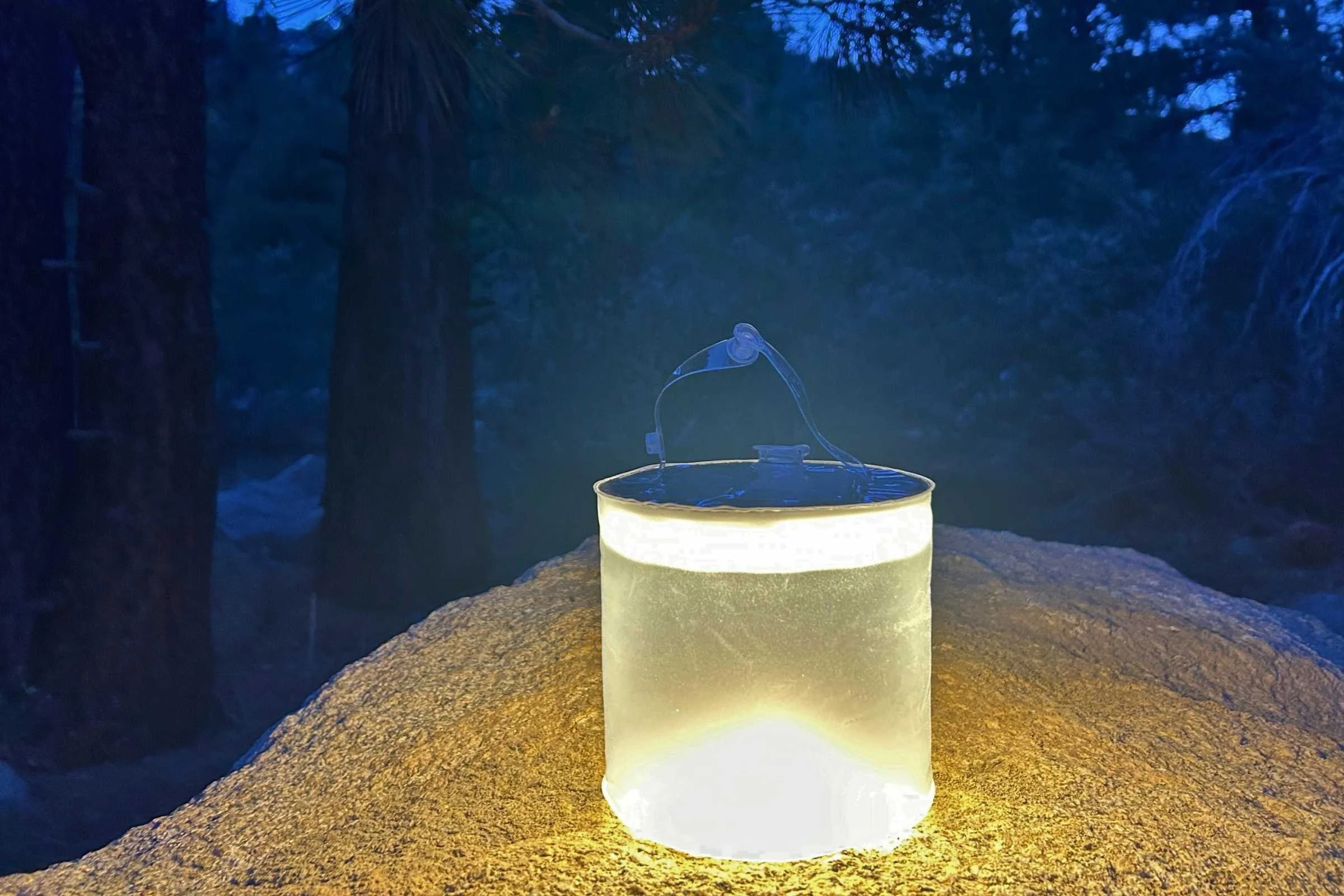
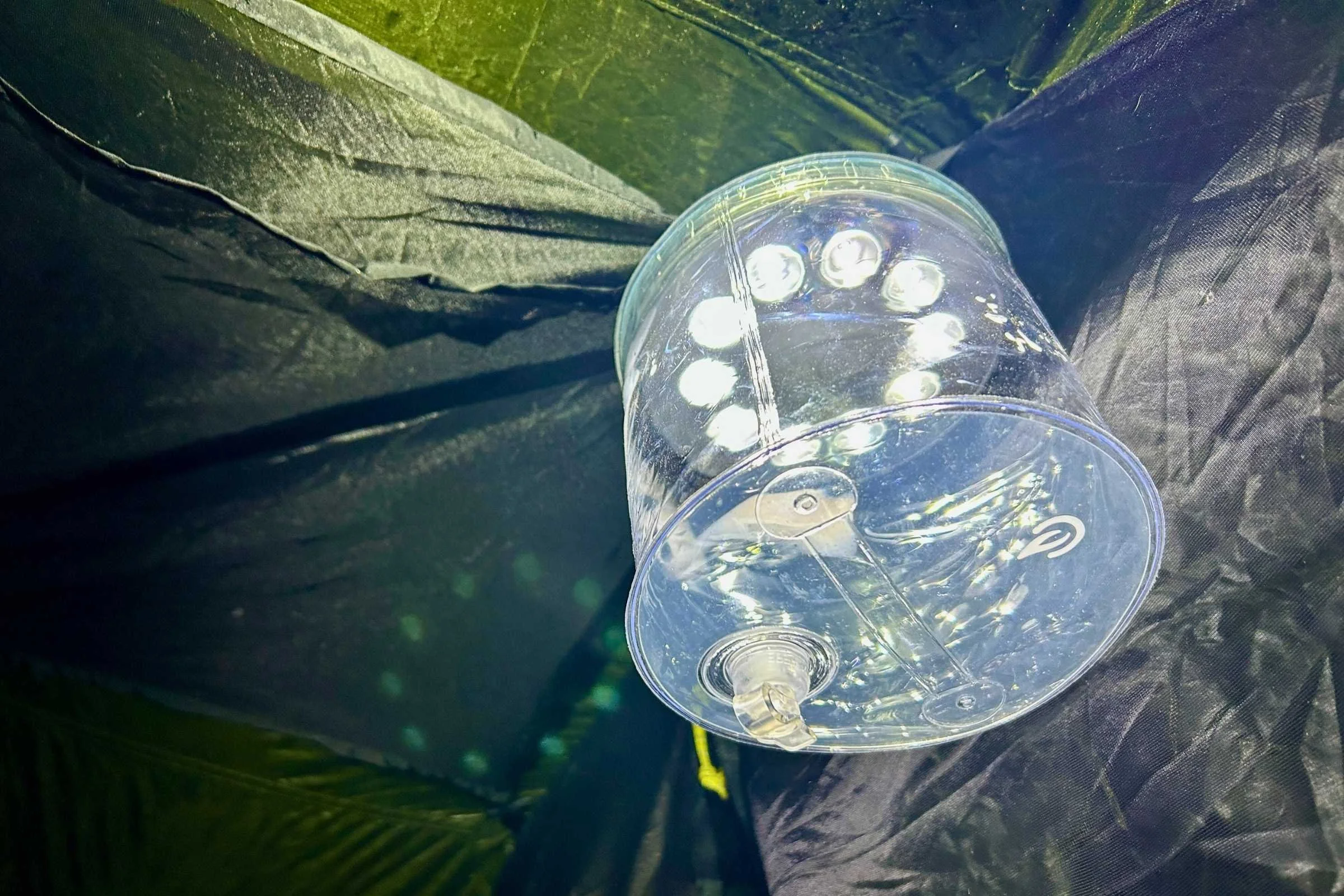
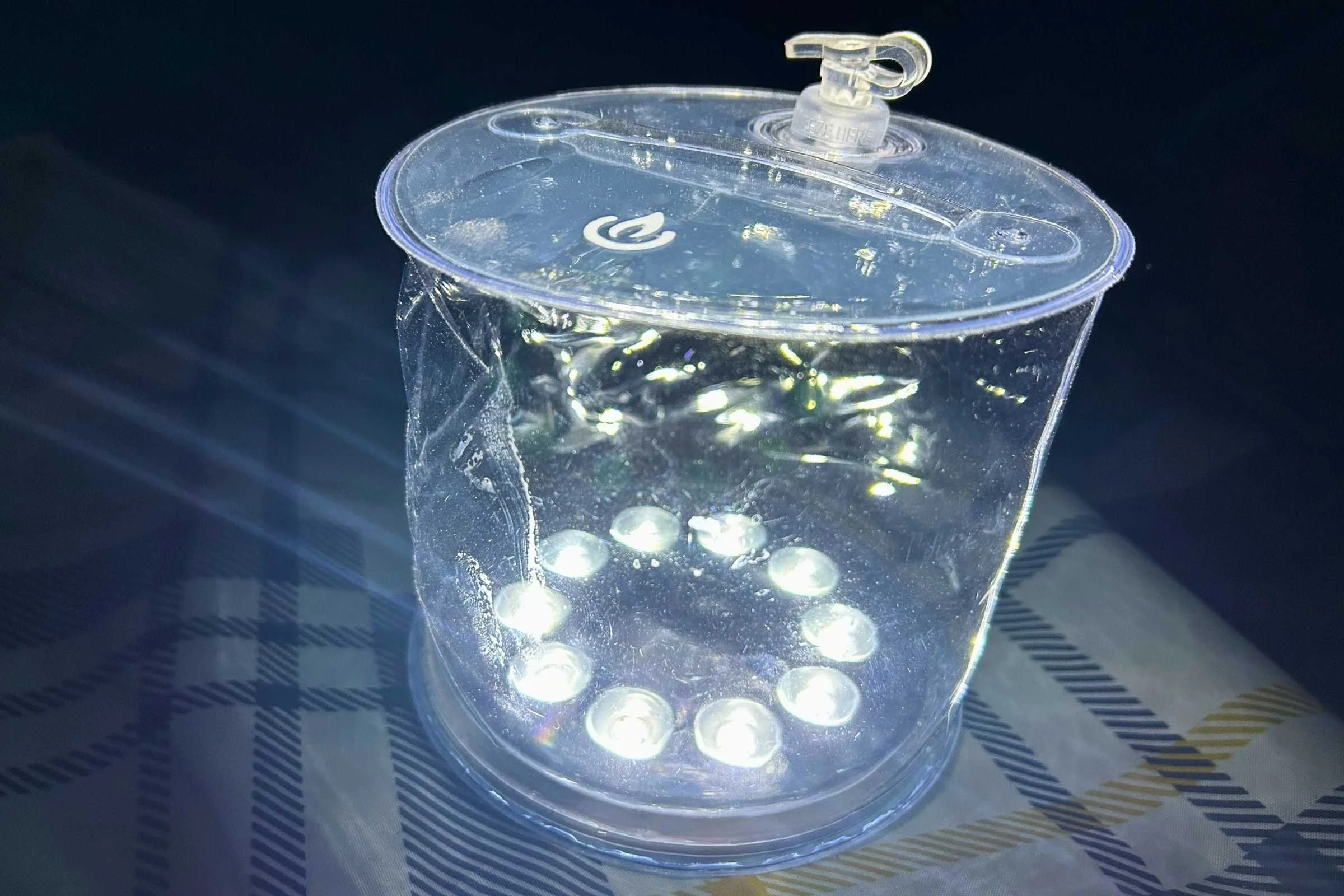
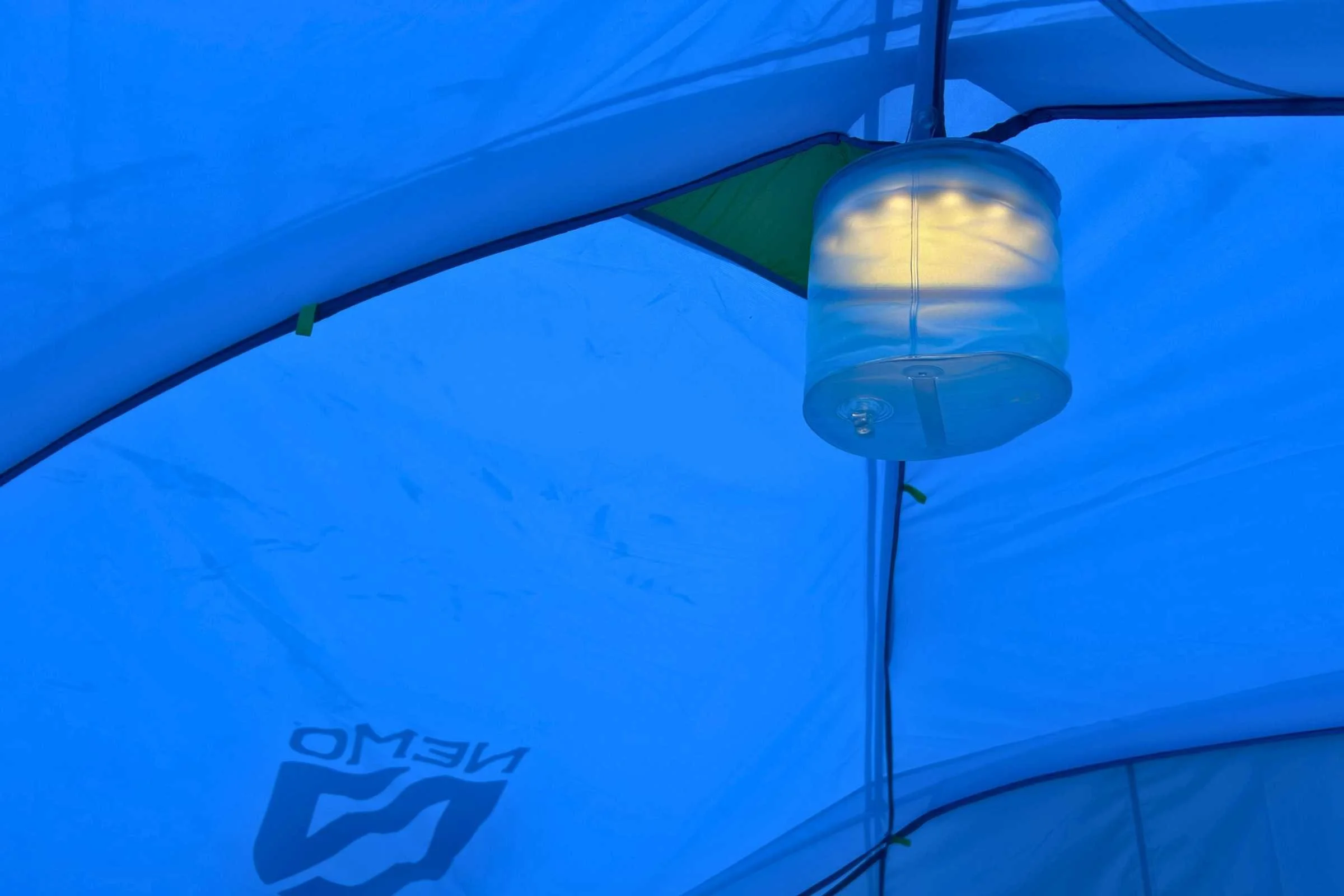
We've been testing both the cool/clear and the color/matte versions of the Luci Original for years under its former brand and name, the MPOWERED Luci Original. MPOWERED was recently acquired by BioLite and we spent the summer testing this re-branded version as well. The color of the face around the solar panel has changed from a rainbow (in the color/matte version) to blue/purple. The warm/matte face material is orange and the cool/clear light is turquoise.
Like the more expensive Luci Charge 360, it charges via solar panel, is compressible and inflates to expand, and has a built-in handle.
Compared to the LuminAID, we found the BioLite Luci Original slower to inflate and deflate. You have to squeeze the mouth valve just right to get it to inflate. Whereas with the LuminAID, it twists into place with a quick single breath.
With the old model of the LUCI, we found that after years in the sun, the plastic connecting the handles to the main lantern gets brittle and breaks, rendering the handles useless. We've been testing the new BioLite version of the LUCI for three months of intense time in the sun and haven't had issues yet, so it is possible that has been fixed.
The Luci Original is a Top-Rated lantern at REI and one of the bestselling lanterns. In our experience, a solar lantern rarely is bright enough for chores, but customers laud the Base Light for its brightness.
It's worth noting that solar panel technology is one of the quickest to update from year to year. As a result, BioLite has updated the Luci Outdoor often. We tested several models of the Luci, and each subsequent model has been brighter, charged quicker, and had longer battery life than older models.
As the solar panel technology is updated, you can find older models on sale. We highly recommend this fun and easy-to-use light, even if you're on a budget.
Best affordable camping lantern: LE LED Camping Lantern
Light Output: 1,000-lumen max
Power source: 3 D alkaline batteries
Weight: 14.0 oz
Battery Life: 10-14 hours
What we liked: price, sturdiness
What we didn't like: battery inefficiency
The LE LED Camping Lantern is our winner for best budget lantern. It is the brightest camping lantern we tested and the highest-rated camping lantern on Amazon, with over 26,000 customer reviews. At only $20, we were skeptical but had to test it out.
It looks like a smaller version of our Overall winner, the ust 60-Day Duro. The plastic is more pliable and isn't as sturdy, and the handle isn't as ergonomic, but the design is otherwise quite similar. It's a decent option if you absolutely can't afford the ust, but ultimately the ust will more than pay for itself after several uses.
View the LE LED Camping Lantern
The LE LED Camping Lantern (right) is a smaller but similar looking alternative to our overall winner, the ust 60-Day Duro (left). We didn’t like the color hue as much, but the real difference is the battery life: 10-14 hours vs. 60 days.
Like the ust 60-Day Duro, the LE LED Camping Lantern runs on D batteries (in its case, three D batteries instead of the UST's four batteries). The LE is shockingly bright for its size — 1000 lumens to the ust's 1200. This makes it the second brightest camping lantern we tested.
But we found the amount of brightness coming out of such a small lantern to be less useful than the 1200 lumens on the ust 60-Day Duro. The larger ust lantern has a bigger globe, meaning those lumens are more useful for completing chores. The LE's light is also harsher, though you can reduce it to a lower yellow-orange setting that is gentler on the eyes.
While we awarded the LE LED Camping lantern as best budget lantern, ultimately, we were disappointed with the battery life. Those 3 heavy D batteries will get you 10 to 14 hours of light on the LE LED camping lantern. The same batteries would last 60 days (or more than 1400 hours) on the ust 60-day Duro.
So, for about 20 bucks extra, you can find the ust 60 Duro lasting 100 times longer than the LE LED Camping lantern. With the price of D batteries running at about $5 for 4 batteries, upgrading to the our overall winner, the ust, will more than pay for itself.
Other camping lanterns we tested
BioLite Luci Solar Inflatable Lantern Charge 150
Light Output: 150
Power source: Solar-powed 2000mAh battery
Weight: 6.1
Battery Life: 5 hours (high), 50 hours (low)
The BioLite Luci Charge 150 is a collapsible lantern with a solar panel on the top and USB-A port for easy recharging on your backpack or at base camp.
The Luci Charge 150 is a collapsible lantern that inflates with a few breaths, making it extremely packable. Because it can grow in size, it's able to throw a lot more light than the smaller battery-powered Black Diamond Moji.
One advantage of the Charge 150 over other models of solar-powered lanterns is the ability to charge your phone on the solar panel. Many backcountry campers and off-the-grid overlanders appreciate the dual functionality. Still, after several months of use, we found that this feature stopped working or started charging very slowly. This was true for every solar powered lantern we tested, not just this model.
Supposedly, battery life for a fully charged Luci Charge 150 should last 9 hours, but in our experience, we're happy to get a whole night's enjoyment out of it. The less expensive Luci Original has significantly more battery life: 24 hours.
BioLite Luci Solar Inflatable Lantern Charge 150
Light Output: 360
Power source: Solar-powed 4000mAh battery
Weight: 10.1
Battery Life: 50 hours
The BioLite Luci Charge 360 is the most robust version of the BioLite Luci series with 31 LEDs and 360 lumens of brightness and an average run time of up to 50 hours (and 110 hours on low). It has a whopping 4000 mAH lithium ion battery and can be recharged via solar or USB-C. It even has USB-A and USB-C output chargers so you can charge older and newer devices (making it better than the similar Luminaid PackLite Titan 2-in-1 power lantern, which only has USB-C).
There's a lot to like about the Luci Charge 360 and it's very similar to the Luminaid Titan 2-in-1. Like the Luminaid, it's IP67 rated. But its average recharge time is longer than the LuminAid Titan on both solar and USB recharge (though once again, we prefer the BioLite's USB-C recharge to Luminaid's micro-USB). It provides 50 hours of light compared to Luminaid's 100 hours (though the Luci Charge has 60 lumens more of light).
The main difference between the two in our minds was the Luminaid is easier to inflate with a one-breath twist-to-inflate system.
If you want USB-C charging, though, and are ok without a red light, go with the Luci 360.
BioLite Luci Solar Inflatable Lantern Charge 360
Light Output: 150-lumen max
Power source: USB-C, 1000 mAh lithium ion (3.7 Wh) battery
Weight: 3.4 oz
Battery Life: 40 hours
We almost gave the award for best portable rechargeable lantern to the AlpenGlow Mini Lantern. It's cute, easy to use, has the best color options, and most importantly–comes with a USB-C charging port instead of the micro-USB found on the similar Black Diamond Moji R+. We also preferred the elastic hanging hook system on the AlpenGlow Mini to that on the Moji R+.
Ultimately, we chose the Moji R+ for better battery life (on low 120 hours vs. 40 hours. The Moji R+ is 50 lumens more, and that really made a noticeable difference for camp chores. The Moji R+ is also smaller and weighs less, so it's more practical for everyday use or backpacking.
There's a lot to love about the AlpenGlow Mini and we think it's a great option, especially if you are looking for a small light more for ambiance than just light alone.
Biolite AlpenGlow Mini Lantern
Light Output: 450-lumen max
Power source: USB-C in, USC-A out
Weight: 9.6
Battery Life: 4 hours
The Black Diamond Orbiter 450 nearly won our best rechargeable lantern category for its light weight, USB-C ports, and in-put and output capability. We also liked that you can cycle through light cycles, including a low light option that flickers like a campfire and a spotlight that focuses up only.
However, the Apollo half the lumens of the Biolite Alpenglow 500. The battery life is also 50 hours shorter. And white, muted light, and blue are the only colors.
View the Black Diamond Orbiter
Light Output: 400-lumen max
Power source: Rechargable battery, USB-A Charging dock
Weight: 25.6 oz
Battery Life: 23 hours
The Snow Peak Home and Camp Lantern is hands-down the most elegant camping lantern we tested. This would look as at home in a stylish apartment as at a glamping site. It also can be used upside down to reflect light upwards.
Unlike the other lanterns we tested, it uses a charging dock not unlikely an electric kettle. We sometimes found it a challenge to line up the lantern exactly on the dock.
Ultimately, despite months of nights of using nothing but this lantern to walk 500 yards between cabins at night, this lantern wasn't bright enough for traveling.
View the Snow Peak Home and Camp Lantern
Light Output: 150-lumen max
Power source: solar-powed 2000mAh battery
Weight: 12.5 oz
Battery Life: 50
The LuminAID Pack Lite Max-2-in-1 has a lot of similarities to the LuminAID PackLite Titan 2-in-1 Power, and it isn't just the names. Ultimately, the Titan has twice the battery life and twice the lumens and can charge 2-3 times as many phones as the Max. The Titan can also do white and red, whereas the Max can only do white. The Titan weighs more at 12.5 oz (the battery is twice as large, after all). Yet we think it's worth the weight and a $25 upcharge for the brighter lantern.
View the LuminAID Pack Lite Max-2-in-1
Light Output: 150-lumen max
Power source: Built-in rechargeable battery
Weight: 6.4 oz
Battery Life: 18 hours
What we liked: whimsical shape, lots of hooks and features
What we didn't like: many parts, swipe difficult to use with cold/wet hands, price
The Princeton Tec Helix is a portable battery-powered lantern that was a favorite of all the sci-fi fans at our campsite.
The Helix resembles a four-legged robot octopus with a glow-in-the-dark collapsible "head."
Each leg of the spider turns into hooks, convenient for hanging in a tent or an adventure mobile. All the legs are removable to save weight. The glow-in-the-dark head has a helix pattern that makes it look futuristic.
View the Princeton Tec Helix
The Princeton Tec Helix is a fun-shaped camping lantern that brought out the inner-child / sci-fi fan in many campers.
Unlike other lanterns we considered, the Helix is a touch light. It swipes to turn on and off, which some people love (especially to play with!). However, we found it challenging to turn on with gloves or wet hands.
The Helix was one of two camping lanterns we considered with a dedicated red led bulb. To use in red light mode, simply swipe to that setting (the MPOWERDs have a pink light, but it's not quite the same). Red light mode can save night vision and is generally considered the most courteous color light to use around other campers.
The Helix, unlike the Black Diamond Moji, has lots of parts. Some parts detach from each other, which can mean more parts to lose or break. The Helix also has many settings, which some testers liked and others found confusing.
It's not for everyone, but there's undoubtedly a group of lantern users who love to nerd out on the aesthetics and abilities of this small but versatile lantern.
Light Output: 270-lumen max
Power source: USB input
Weight: 4.0 oz
Battery Life: N/A (requires USB input)
What we liked: brightness, weight
What we didn't like: battery system, battery drain
We had a lot of fun playing with this inflatable LED light tube. It’s designed to illuminate the edges of a vehicle for #vanlife or to energize a tent. These collapsible tubes are a creative solution to the problem most light strings have: they take up space and often get tangled.
View the Klymit Everglow Light Tube
Our gripe with the Everglow Light Tube, like the BioLite string lights, is that they require an external USB battery source. In our experience, the Everglow Light Tube drained our 10000 mAh battery in a few hours. While a light tube can provide a lot of lumens over a big surface area, the extra weight and hassle of running off an external battery source cancel out the advantage of lightweight inflatability.
Light Output: 100-lumen max
Power source: 3 AAA batteries
Weight: 7.0 oz
Battery Life: 120 hours
What we liked: price, brightness, battery life
What we didn't like: weight, harshness of light
The Spright was one of our recommended gifts in our Best Gifts Under $25 guide. At $18, you'd be hard-pressed to find a brighter and more affordable camping light. It runs on triple-A batteries and compresses down to make it quite portable.
View the UST Spright
The ust Spright collapsible lantern has a collapsible silicone pop-up globe to throw out more light than similarly sized lanterns.
Yet, at 7 oz, it's more than twice the weight of the portable battery lantern we recommend, the Black Diamond Moji. We also found the LED light on the Spright to be harsh compared to the Moji.
New York Times/Wirecutter also reviewed the Spright and complained that even after the lantern is turned off, it is made with glow-in-the-dark silicone that bothered the testers while they were sleeping. We found the glow-in-the-dark feature to be an advantage in our testing.
We think glow-in-the-dark material can make it easier to find a lantern in the dark amongst a pile of clothes and sleeping bags when we have to rush out to use the pit toilet or check on a weird sound outside. Still, we get why some people may find the glow-in-the-dark annoying.
Burn time: 10 hours (8 oz fuel canister)
Light Output: 490-lumen max
Power source: Isobutane canisters
Weight: 7.4 oz
Battery Life: 10 hours
What we liked: Burn time, high lumen
What we didn't like: runs on a fuel canister
The Primus EasyLight Camping Lantern is a classic gas lantern with 10 hours of burn time and 490 lumens. It's similar to the Coleman Gas Light but with a few upgrades, like longer battery life and less harsh light. We didn't test any gas lanterns for this guide because they are more flammable than LED lanterns and can sometimes be banned during high fire seasons. However, many people enjoy them for backyard gatherings, so we wanted to include them here as an option worth considering.
View the Primus EasyLight Camping Lantern
Burn time: 7 hours (8 oz fuel canister)
Light Output: 1,000-lumens max
Power source: Propane fuel tank
Weight: 16.4 oz
Battery Life: 7 hours
What we liked: price, extreme brightness
What we didn't like: runs on fuel canister
This classic gas lantern is what most people think about when they want a gas camping lantern. Of the gas lantern models by Coleman, the Coleman Deluxe is the least expensive of these options. In contrast, Coleman has a dual fuel lantern that is more than 3 times the price.
View the Coleman Deluxe Propane Lanetrn
The Deluxe Propane is bright-almost 1000 lumens-with 7 hours of life on high. While gas lanterns are increasingly becoming a relic of the past, we think it's hard to beat the Coleman's price, brightness, and amount of "battery" life. With over 2000 reviews on Amazon and high marks from Gear Junkie, many outdoors people are happy with the Coleman Deluxe.
Still, we have issues with the gas lantern as a category. With many forests banning gas-powered lanterns for their flammability, we think you'd be better served with an LED lantern — even if it doesn't feel quite as classic.
What to look for in a camping lantern
Ease of Use
While multi-colored lanterns connect via Bluetooth to your phone, ultimately, we think every headlamp should be easy enough to operate so a sleepyhead can turn it on and off with little fuss.
Battery Life
Almost everything we tested can be categorized as an LED camping lantern. Camping lanterns these days take advantage of the impressive battery life of LED lights, with run times up to 60 days in the case of the UST. Battery life on lanterns can differ starkly between maximum light and low light modes. In general, we found the battery life of manufacturers to be exaggerated.
Light Brightness
With LED lanterns, brightness depends on how many LEDs are inside the lamp. The brightness of a light is measured in Lumens. We tracked brightness in max light mode and low light mode and report that information for each.
LIGHT OUTPUT
We found that even high lumen smaller lights were less functional than bigger lanterns. In our Best Headlamps guide, we described this as the difference between floodlights and spotlights.
Power source
Smaller lanterns operate on AAA batteries or require a AA battery or two. Larger lanterns may require D batteries.
Red Light or Warm Light
The rods in our eyes are less sensitive to red light and allow many people to have better peripheral vision at night than with white light. A lantern with a red light mode allows us to improve night vision for when we are no longer next to the light. Red light also is less visible from a distance, which allows you to have a stealthier campsite. Leave No Trace outdoor ethics recommend using red light mode when camping near others to avoid accidentally shocking the eyes of other campers with an overly bright light.
Weatherproofing
Lanterns are a piece of outdoor gear with significant potential for getting wet. Whether it's a rainstorm at the campsite, a spill packing up the kitchen after a car camping trip, or sprinklers going off after the backyard party, moisture happens.
Unfortunately, even the smallest amount of moisture has the potential to damage battery connectors or USB ports on lanterns. We damaged at least one lantern beyond repair during our testing because of it. Some lanterns come with international waterproof ratings, such as the BioLite AlpineGlow, which has an IPX4 water resistance rating.
Battery capacity (For solar-powered lights)
If you're using solar-powered lanterns, they work by charging during the day and storing that energy in a battery pack (included with the lantern). This time spent charging will determine the number of hours you'll get out of your lantern before you need to recharge it in the sun again. This battery capacity also may allow you to recharge your cell phone or another USB device.
Size, weight, and portability
The Black Diamond Moji R+ (middle) is the smallest and brightest of the three similar portable-sized camping lanterns we tested.
We tested lanterns that weighed as little as 3 oz to lanterns that weighed several pounds. Choose the lantern based on how much area you need to illuminate, how far you are carrying it, and how you are bringing it to your camping location. For example, if you’re driving to your campsite, you can usually handle a heavier and bulkier camping lantern. If you’re flying to a destination and then renting a vehicle or carpooling, you may want something more minimal.
Additional features (e.g., adjustable brightness, hanging options)
Although not necessary, many lanterns have features that can make them easier or more fun to use. Most lanterns we tested have adjustable brightness, but the Biolite lantern can change to blue, red, and yellow. Some lanterns have handles, but others do not.
We tested camping lanterns side-by-side in several wild camps in the desert.
How To Choose the Camping Lantern For You
Should I get a Rechargeable camping lantern vs. Battery lantern vs. Solar lantern?
A Battery operated lantern tends to have the most extended battery life. But as we write in our Eco-friendly Gear guide, disposable batteries come with a long-term environmental cost from producing additional waste.
Our recommended rechargeable camping lantern winner comes with cool features like Bluetooth-enabled control from your phone so that you can direct colors and dimming.
Rechargeable lanterns also don't have the failure points of lanterns that use disposable batteries. Corroded disposable alkaline batteries can become an issue for those who camp a few times a year, especially if stored in a garage or basement that gets moisture. Rechargeable lanterns are less prone to that possibility. Rechargeable could be better for those who use their lantern a few times a year.
Pros and Cons of a Glow-in-the-Dark Lantern
Being glow-in-the-dark wasn't a make-or-break-it criterion for us, but it may be for you. Some lanterns feature glow-in-the-dark plastic or silicone that makes it easier to find your turned-off lantern in the middle of the night, say, if you need to go pee. Still, some media and customer reviewers found it difficult to sleep with the eerie glow in their tent. I'll leave it up to you — but it is a feature of lanterns you should know about.
Can your lantern charge your phone or other USB devices?
Not all lanterns can do this, but some solar and rechargeable lanterns can charge your phone or other USB devices. It wasn't an essential must-have to make our winners list, but it is a nice perk — especially if you'll be far off the grid.
Dimming and Colored Lights
Dimming and colored lights weren’t essential criteria for us, but it is pretty neat to be able to dim your lights or for them to change colors. A Coleman lantern-style camping lamp won't be able to do that.
We like dimming and colored lanterns to add ambiance to the campsite or backyard party. During fire bans or while camping in alpine areas where fires aren't allowed, it's nice to gather around a colored lantern like a campfire.
The novelty of a lantern that changes colors will make the night more fun for some campers. For others, it's an unnecessary gimmick. I'll leave it up to you, but we highly recommend paying a little extra for the functionality if you think you may enjoy a lantern that changes colors.
Camping lanterns care and maintenance
Proper care and maintenance of your camping lantern will help extend its lifespan and ensure optimal performance. Here are some special tips for lantern light care and maintenance:
Read the manufacturer's instructions
Start by reading and understanding the manufacturer's instructions and guidelines specific to your lantern model. This will provide you with the most relevant information on maintenance, cleaning, and any specific care requirements.
Handle with care
While camping lanterns are designed to be durable, they still require gentle handling, especially around USB ports (for rechargeable lanterns). Avoid dropping or mishandling the lantern, as rough handling can damage internal components or the lightbulb.
Clean regularly
Regular cleaning is essential to keep your lantern in good condition. Wipe the exterior of the lantern with a soft cloth to remove any dirt, dust, or grime. For more stubborn stains, use a mild detergent or cleaner recommended by the manufacturer.
Check and replace batteries
If your lantern uses disposable batteries, regularly check the battery compartment for any signs of corrosion or leakage. Replace the batteries as needed and ensure they are inserted correctly according to the polarity markings.
Rechargeable batteries
If your lantern has rechargeable batteries, follow the manufacturer's instructions for charging and maintaining the batteries. Avoid overcharging, as it can reduce battery life. If the lantern will not be used for an extended period, it's recommended to partially charge the batteries before storage. Be careful around temperature extremes—either extreme cold or heat—with batteries.
Keep it dry
While some lanterns are designed to be weather-resistant, it's important to keep them as dry as possible. Avoid exposing the lantern to excessive moisture, rain, or water immersion, as it can damage internal components or the electrical circuitry.
Store properly
When not in use, store your camping lantern in a cool, dry place. Remove the batteries if the lantern will not be used for an extended period to prevent potential battery leakage or corrosion.
Test before each use
Before heading out on a camping trip, test your lantern to ensure it's working properly. Check the brightness settings, adjust the focus if applicable, and ensure the power source (batteries or rechargeable) is fully charged or has sufficient power.
Carry spare parts
If possible, consider carrying spare batteries or spare bulbs specific to your lantern model. This will ensure you're prepared in case of any battery or bulb failures during your camping trip.
Tips for camping lanterns and lights
How to save your battery
To prolong the battery life of your camping lanterns and lights, use them on the lower brightness settings whenever possible. Most of the lights we tested come with adjustable brightness levels, allowing you to conserve power while still having enough light to do most camp chores. I'll usually keep my light on low and then turn it up to higher brightness for shorter durations, such as when I'm chopping vegetables or trying to read directions to set up a piece of gear.
Carry back-up batteries
Carrying spare batteries or investing in rechargeable ones can ensure that you won't end up in the dark. Remember to turn off lights when not in use and avoid leaving them on unnecessarily to further extend battery life.
Placing and mounting your light
It doesn't matter how many lumens your lantern is if you aren't hanging it in the correct place. Ask any photographer. It's shocking how much of placement and mounting matters when it comes to making an area feel bright.
When setting up your campsite, strategically position lights to illuminate key areas such as cooking areas, paths, and communal spaces. Hanging lanterns from tree branches or tent poles can provide overhead lighting, while placing smaller lights at ground level can help prevent tripping hazards (especially around hazards like tent guylines). Ensure that lights are securely attached to avoid damage, especially in windy conditions.
Maintenance and care
Although most of the lanterns we tested come with at least a 1-year warranty, a lantern can last a decade or more with proper care. Regularly check for any signs of wear or damage, such as cracked casings or corroded battery compartments, and address them promptly. Clean lights regularly to remove dirt, dust, and debris that can affect performance. For example, we found that all the solar-powered lanterns that have USB-A ports eventually failed due to dirt and dust.
Avoid exposing lights to extreme temperatures or moisture when not in use, and store them in a dry, protected area between camping trips. We frequently found that plastic will crack after extended UV exposure, which seems like a problem for a solar-powered light.
As usual, following manufacturer's guidelines for maintenance and care can help ensure optimal performance and longevity.
Safety precautions when using camping lights
Avoid placing your camp lights near flammable materials or sources of heat, such as cooking stoves or open flames. Ensure that lights are properly secured and stable to prevent them from falling on your head while in your tent or from a tree branch when suspended in your camp. You also want to make sure they don't cause tripping hazards.
FAQ
The Luci lantern has among the best handles of any of the lanterns we tested with an easy to use snap system that allows you to secure the lantern in tight spaces and where fixed hooks would not otherwise fit.
-
Most campers need 200-500 lumens for general campsite use, with specific needs varying by activity. For tent reading in your tent, most campers find that 100-200 lumens provides enough light without being harsh on the eyes. Cooking and camp chores that deal with hot surfaces and sharp knives generally require 200-400 lumens for adequate task lighting, while large group campsites or emergency medical situations will benefit from 500+ lumens. The UST 60-Day DURO at 1,200 lumens can illuminate an entire campsite but offers dimmer settings for more intimate lighting needs.
-
Battery-powered lanterns offer the longest runtime with models like the UST 60-Day DURO lasting 1,440 hours on 4 D batteries, making them ideal for extended trips and emergency preparedness. Rechargeable lanterns like the BioLite AlpenGlow 500 provide modern conveniences including USB charging ports, and color-changing modes, but typically last 200-400 hours on low settings. Choose battery-powered for reliability and extended off-grid use, or rechargeable for weekend trips and modern features.
-
Battery life varies dramatically between high and low settings, with most manufacturers' claims based on the lowest brightness levels. Based on our testing, on high settings, expect 4-20 hours from rechargeable lanterns and 10-60 hours from battery-powered models. The UST 60-Day DURO delivers its advertised 1,440 hours only on low settings with 4 D batteries. We've found cold temperatures reduce alkaline battery capacity by up to 50%, while lithium batteries do better in extreme conditions. Always carry spare batteries or charging options for extended trips.
-
Some people find high-lumen lanterns can be overwhelming for camping but they're great in specific situations like large group campsites, emergencies, or setting up camp in complete darkness. The key is choosing lanterns with adjustable brightness settings so you can dial down the intensity for normal use. A 1000+ lumen lantern on its lowest setting often provides better light quality than a lower-powered lantern on high, plus you have maximum brightness available when needed.
-
IPX4 water resistance handles most camping conditions including rain and accidental splashing, making it a good choice for. IPX6 or higher ratings provide better protection against heavy rain and brief submersion, so are better for overnight canoe or kayak trips or extreme weather camping. Models like the BioLite AlpenGlow 500 with IPX4 rating offer adequate protection for car camping and backpacking, while premium options with IPX7-8 ratings can handle kayak camping or very wet conditions.
-
Most campers find warm light (2700K-3000K) is better for its cozy, campfire-like ambiance that's easier on the eyes during extended use. Cool light (4000K-6500K) provides better color accuracy for detailed tasks like cooking or gear repairs but can be harsh and disruptive to night vision. Many lanterns like the BioLite AlpenGlow series offer both warm and cool settings, plus red light modes that preserve night vision while being courteous to nearby campers and following Leave No Trace.
-
Use the lowest brightness setting that meets your needs since battery consumption increases exponentially with brightness levels. Keep spare batteries warm in cold conditions by storing them inside your sleeping bag overnight, as temperatures below 20°F can reduce alkaline battery capacity by half. Turn off the lantern when not needed rather than leaving it on continuously, and consider lanterns with automatic shut-off timers. Lithium batteries perform better than alkaline in extreme temperatures but cost more initially.
-
Hang lanterns above head height for the most effective area lighting using the built-in hooks or carabiners that come with most models. The Black Diamond Moji R+ includes both hooks and magnets for versatile mounting options including vehicle attachment. Position lanterns away from your direct line of sight to avoid glare, and use diffusers or frosted globes when available to create softer, more pleasant lighting. For cooking tasks, position the lantern to avoid casting shadows from your hands onto your work area.
How we tested
Our Testing Process
2+ years of extensive field testing across diverse environments
Testing Locations
- Joshua Tree National Park
- Colorado high country
- Bristlecone Pine forests
- Utah high desert
- Off-grid camp near Yosemite
- Diverse campgrounds & backcountry
What We Test
- Real-world battery life vs. claims
- Light output & distribution quality
- Durability through months of use
- Water resistance & weatherproofing
- Charging reliability (solar/USB)
- Ease of use in camp conditions
Liz Thomas is Treeline Review’s editor in chief and a long-time gear reviewer.
Why you should trust us
I’ve backpacked over 20,000 miles and have at least 1000 nights sleeping outdoors. I'm editor-in-chief here at Treeline Review and oversee all our gear articles. I’ve written about outdoor gear for numerous publications, including as contributing editor and columnist at Backpacker Magazine and the New York Times’ product review site, Wirecutter.
After too many car camping trips lying to myself that a headlamp was enough lighting (I also wrote our Best Headlamps guide), I decided to do a deep dive into camping lanterns.
Testing camping lanterns has been a nine-month journey that has made all my camping trips exponentially more enjoyable. The humble camping lantern was the small piece of gear that made a big difference–and those are my favorite pieces of gear to write about.
I’m the author of the National Outdoor Book Award winning Long Trails Mastering the Art of the Thru-hike. My book has extensive gear chapters. I regularly book speaking gigs with outdoor clubs, non-profits, colleges, and universities to talk about the outdoors and lead gear panels.
You can read more about me at www.eathomas.com or @lizthomashiking or on my author page.

